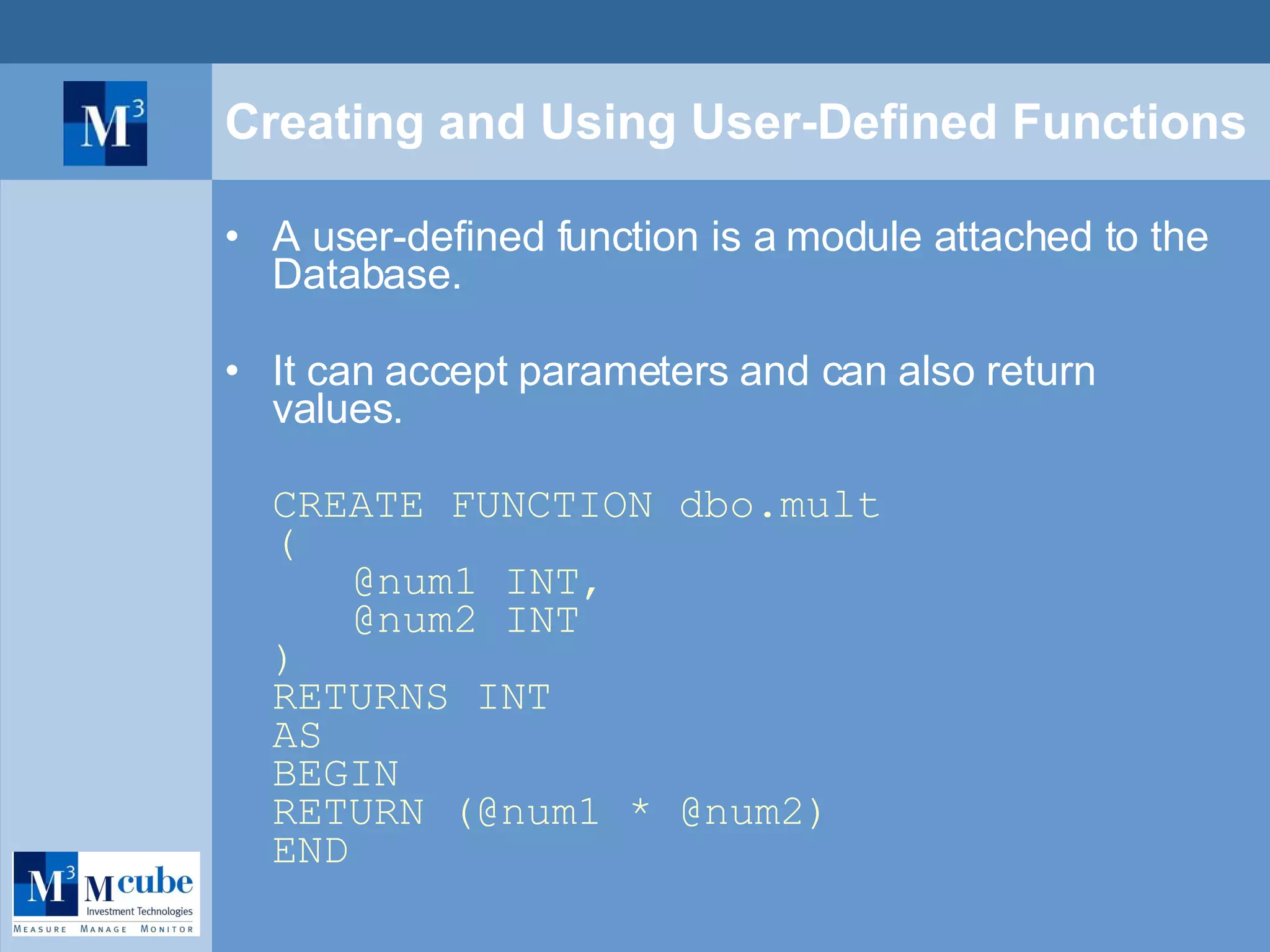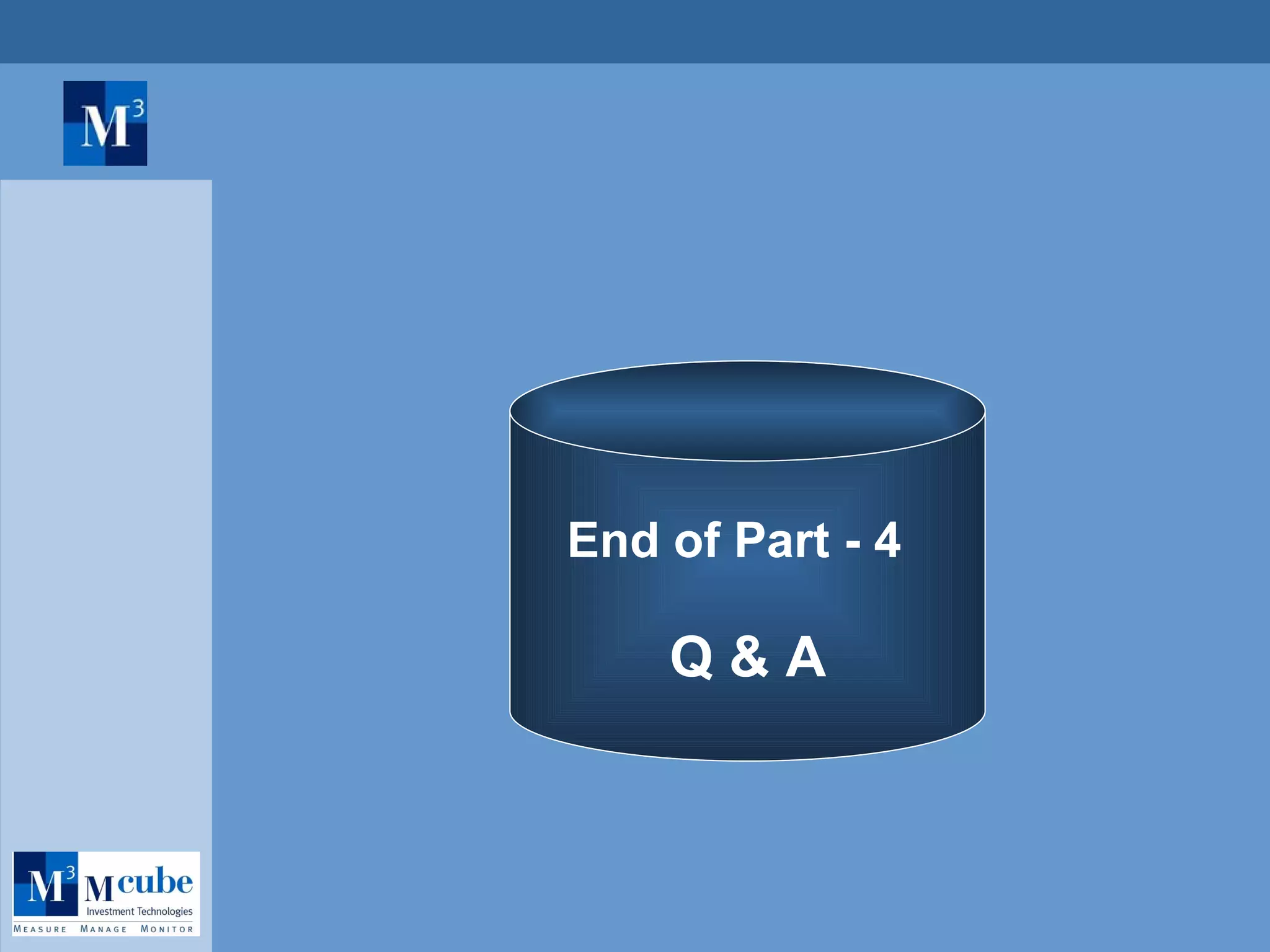SQL Server 2000 provides database functionality including tables, indexes, queries, and stored procedures. It allows for structured storage and retrieval of data. Key objects in SQL Server include databases, tables, indexes, and queries. Databases can be designed in normal forms to avoid data duplication and inconsistencies.
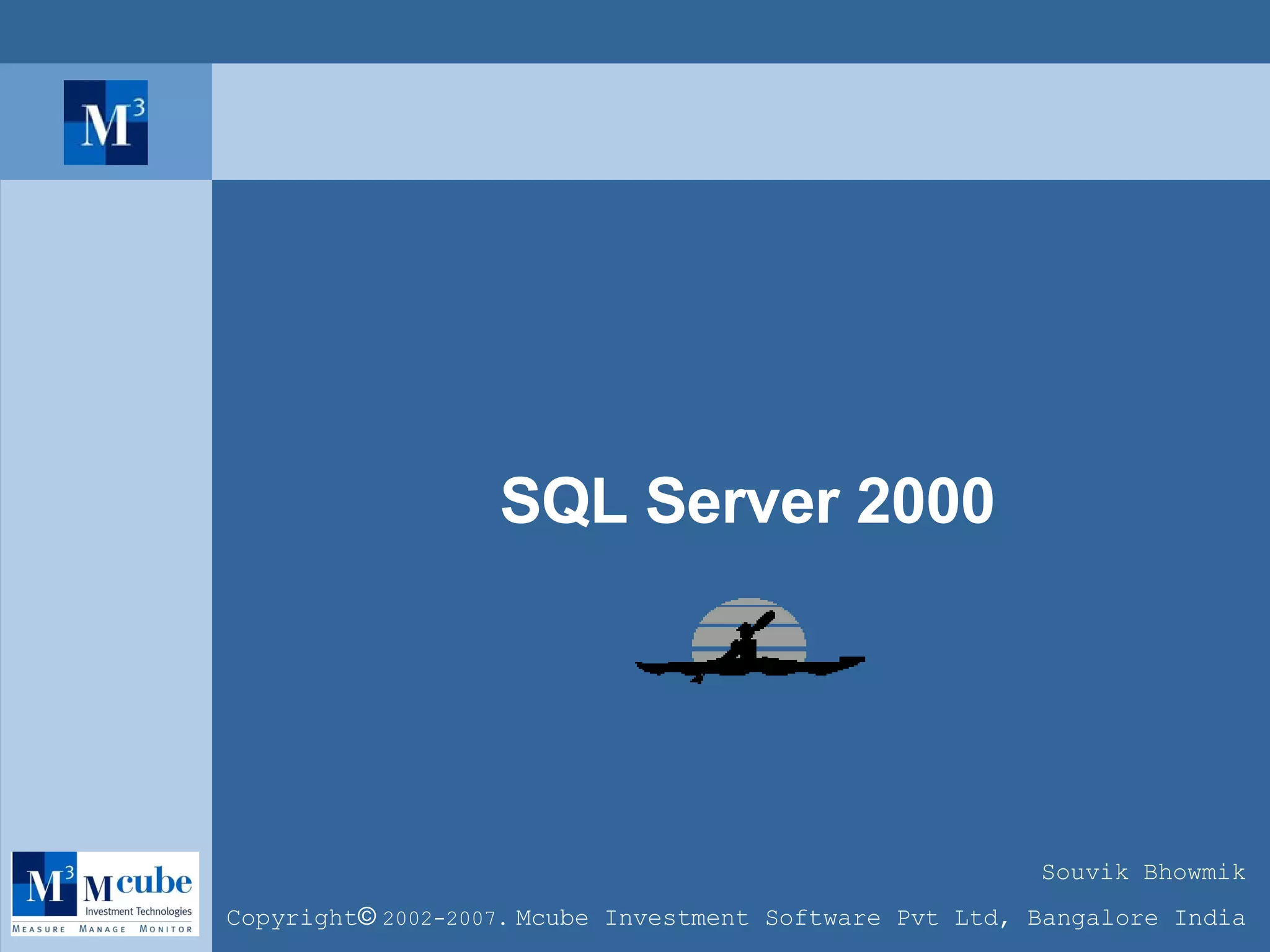
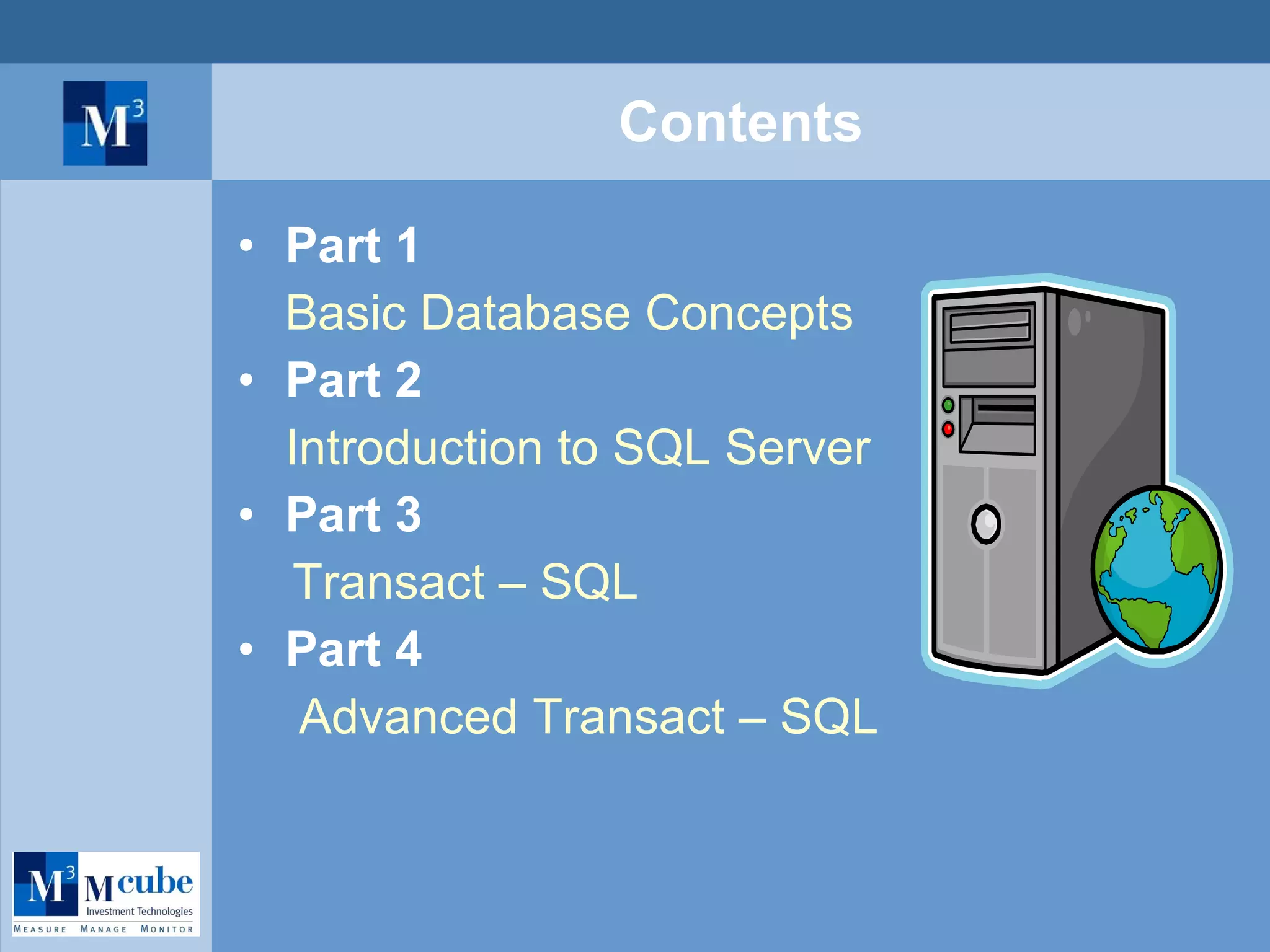
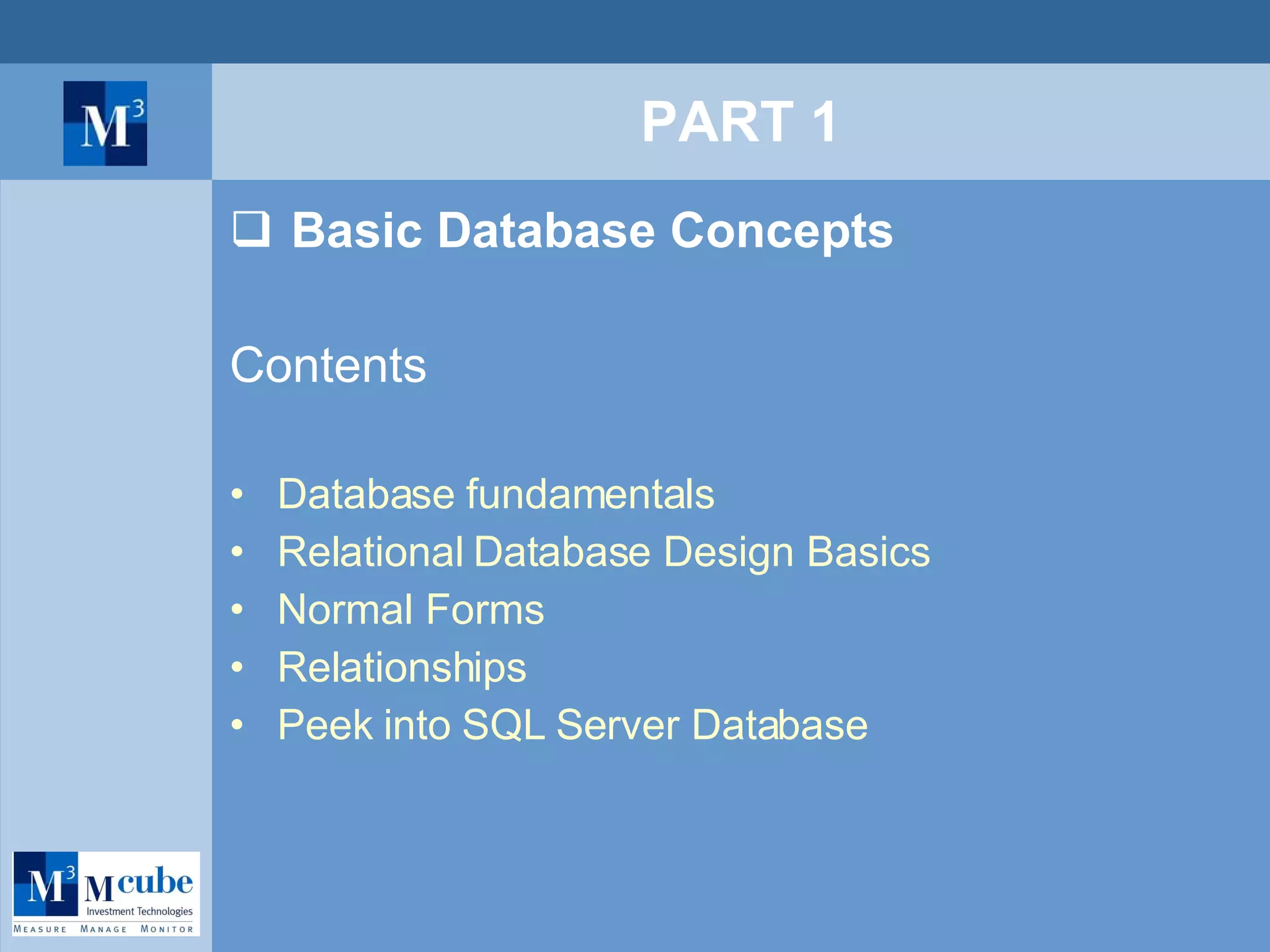
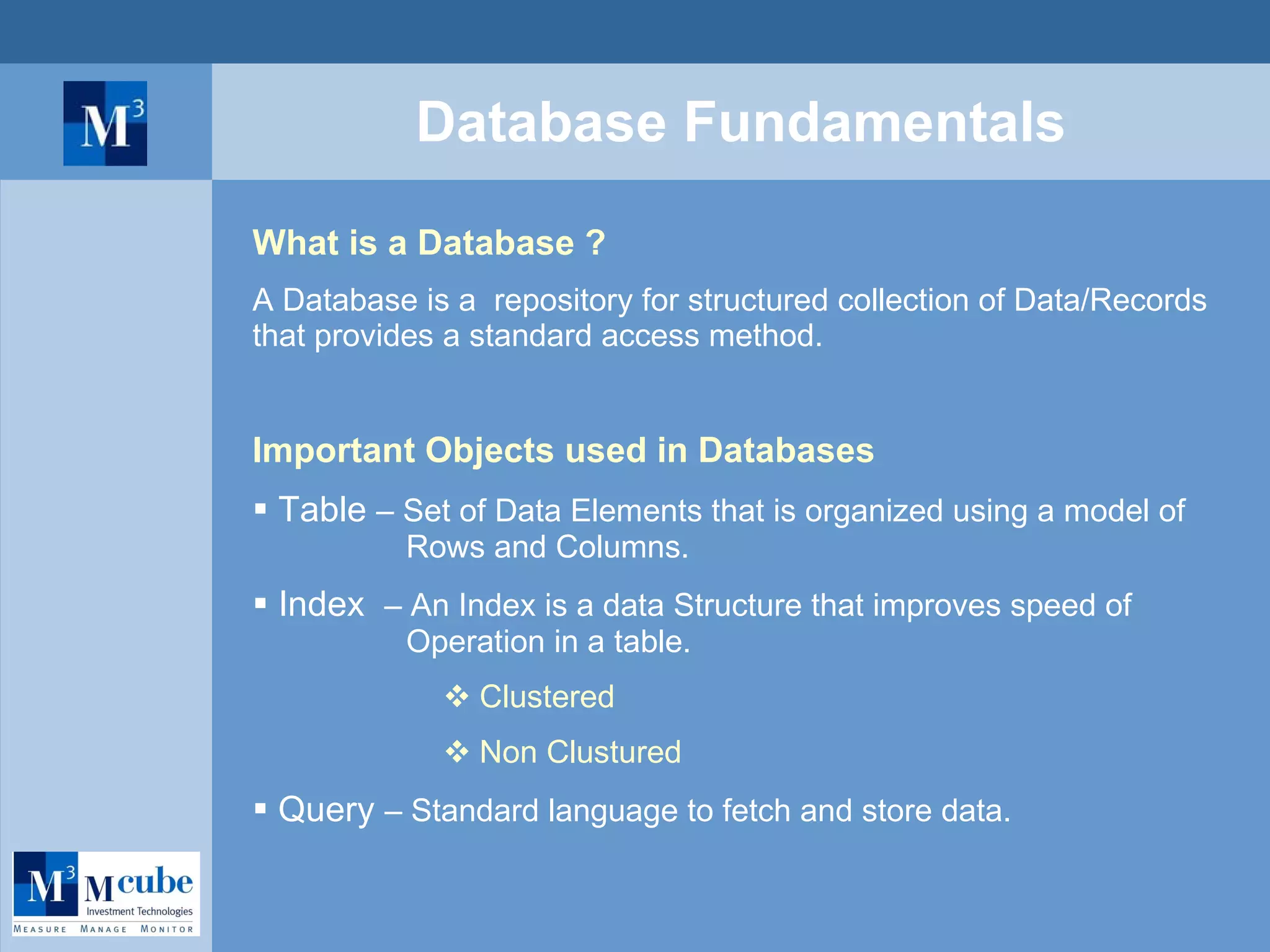
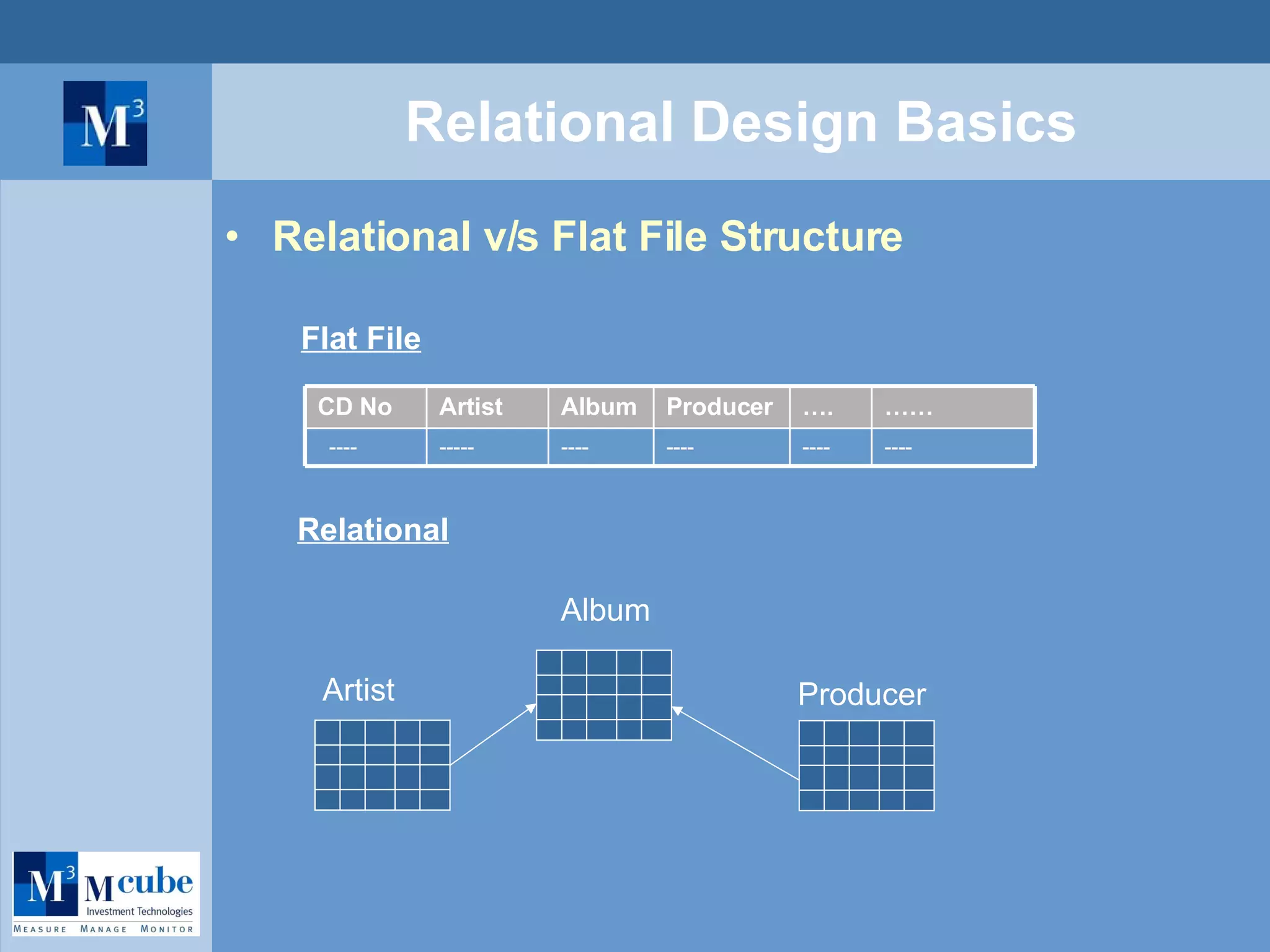
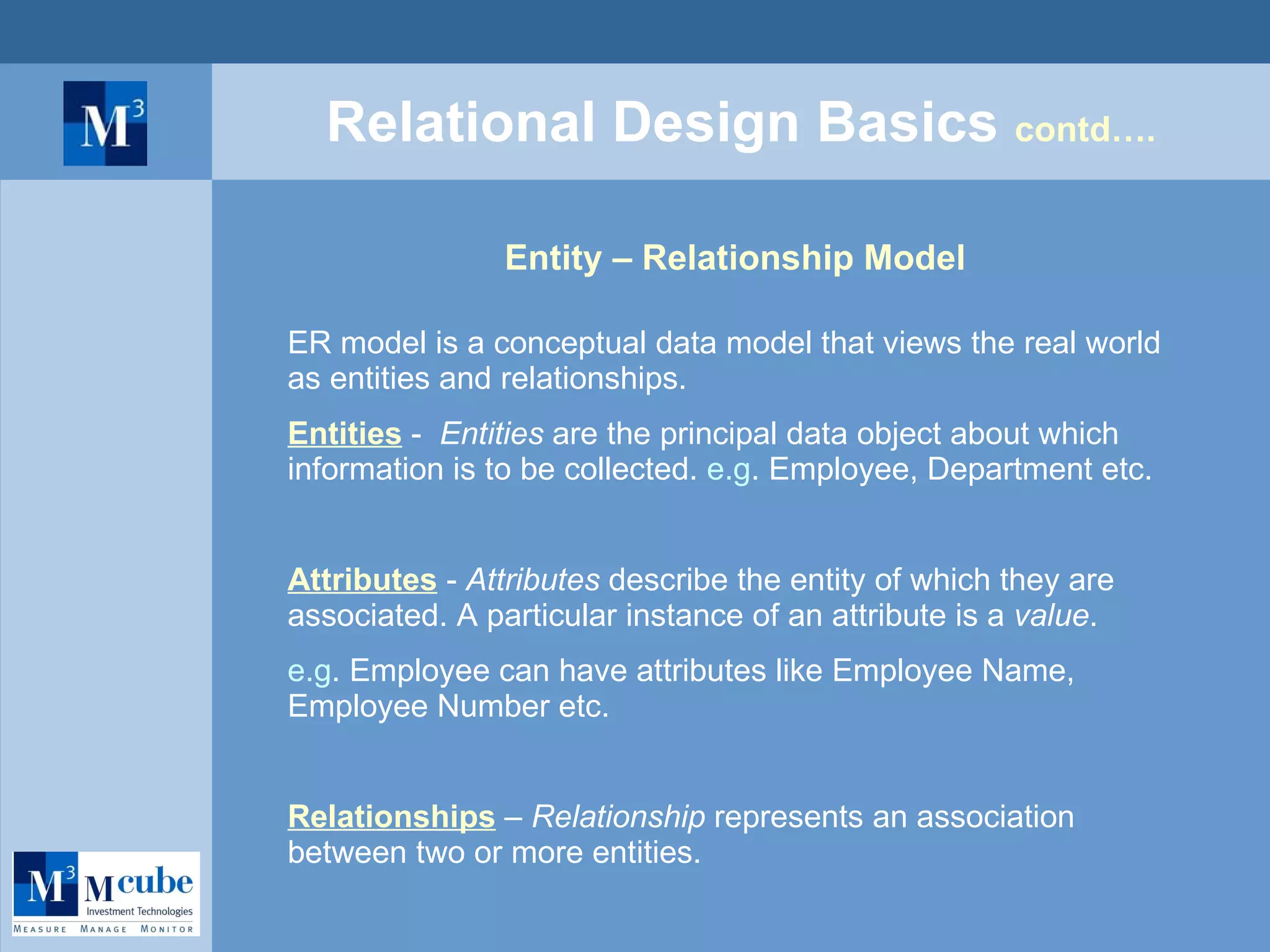
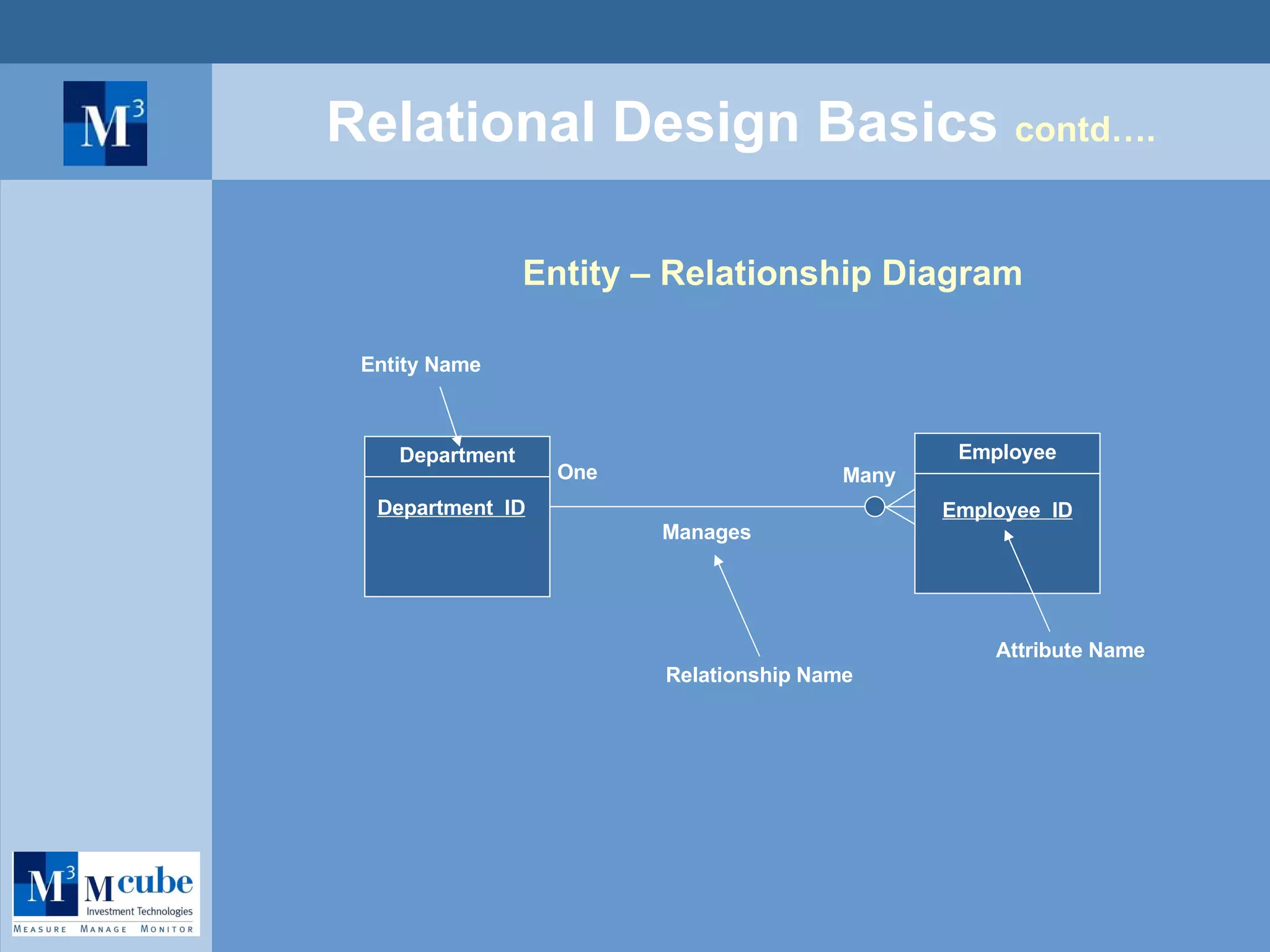
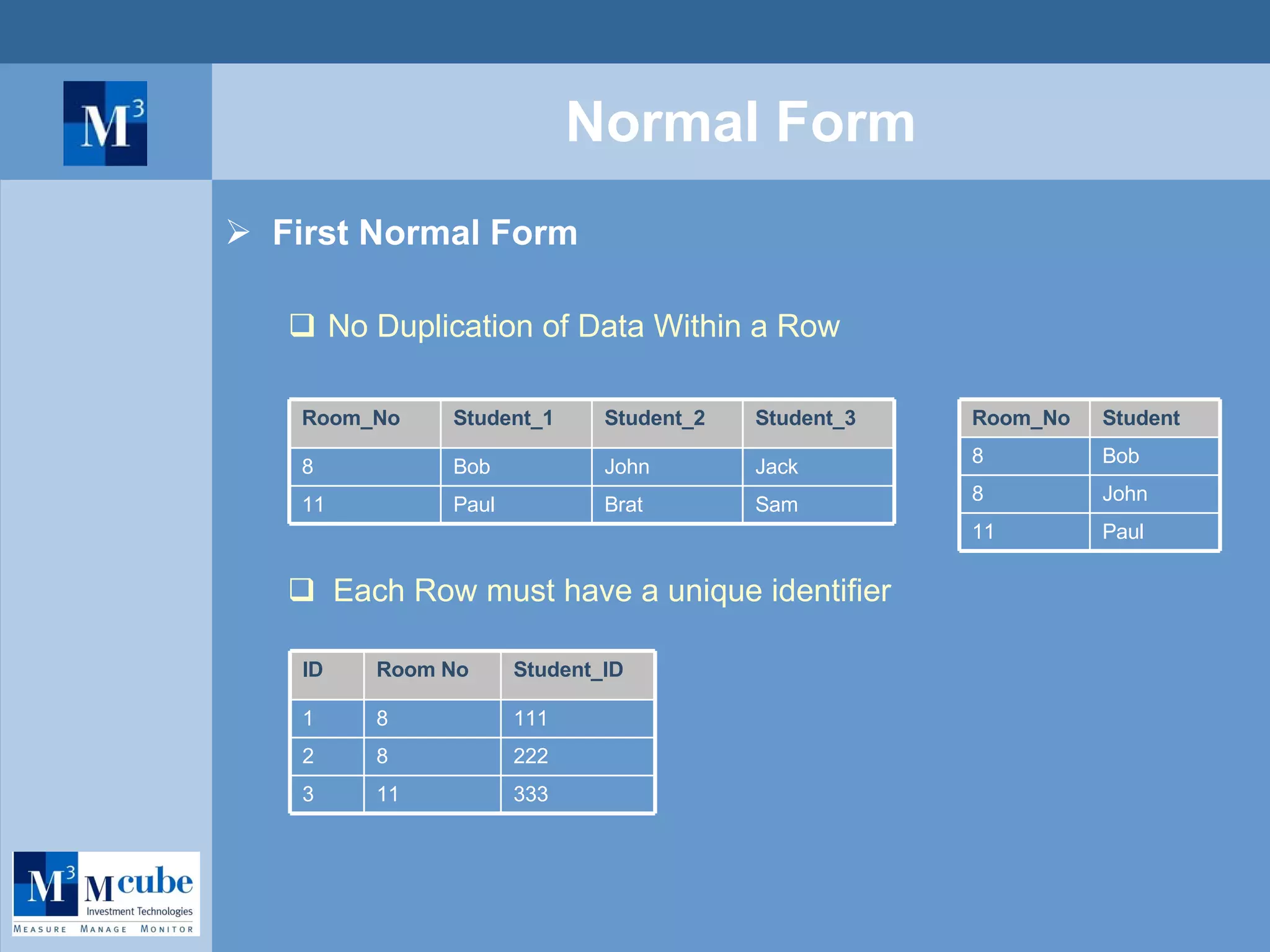
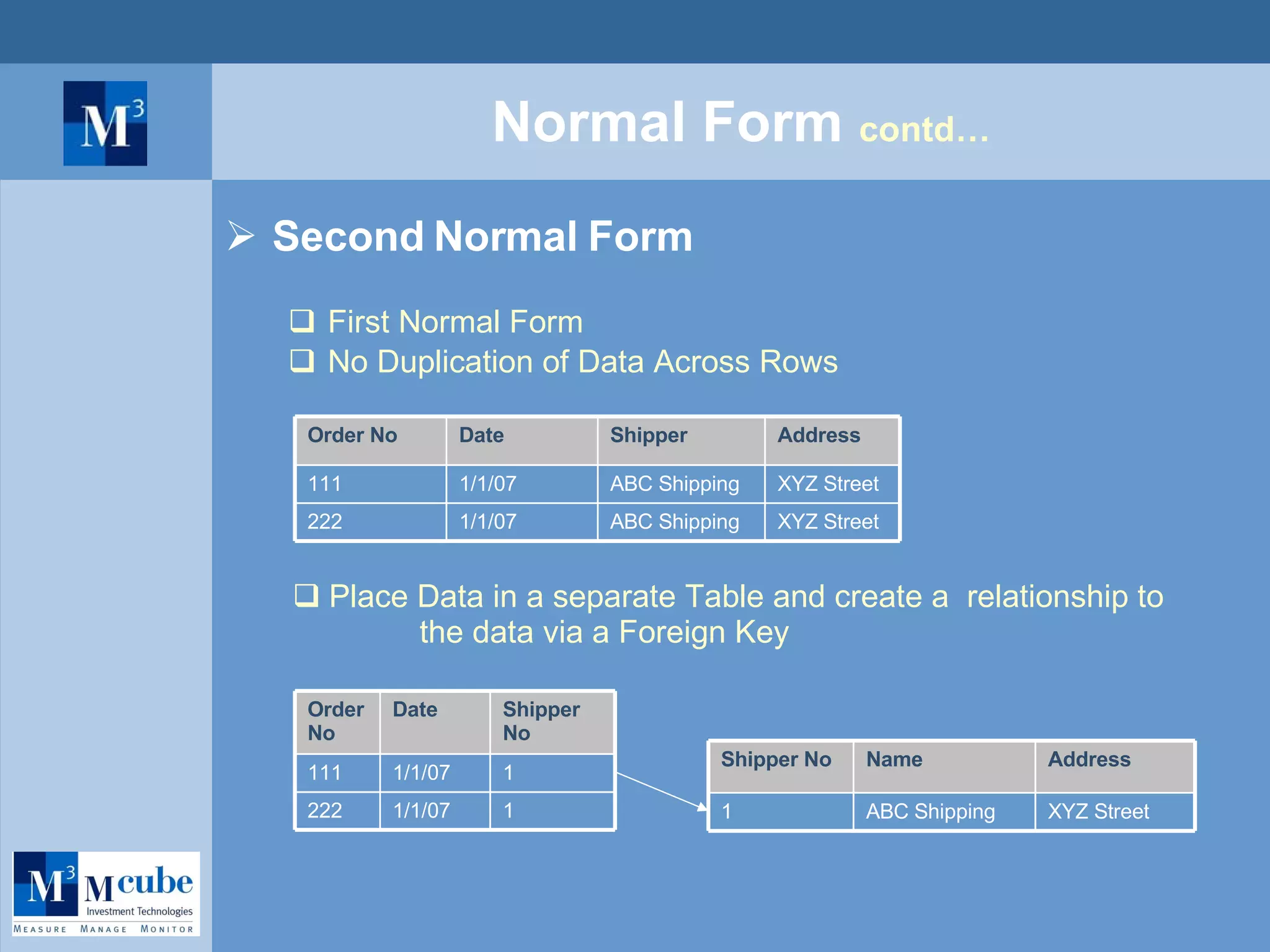
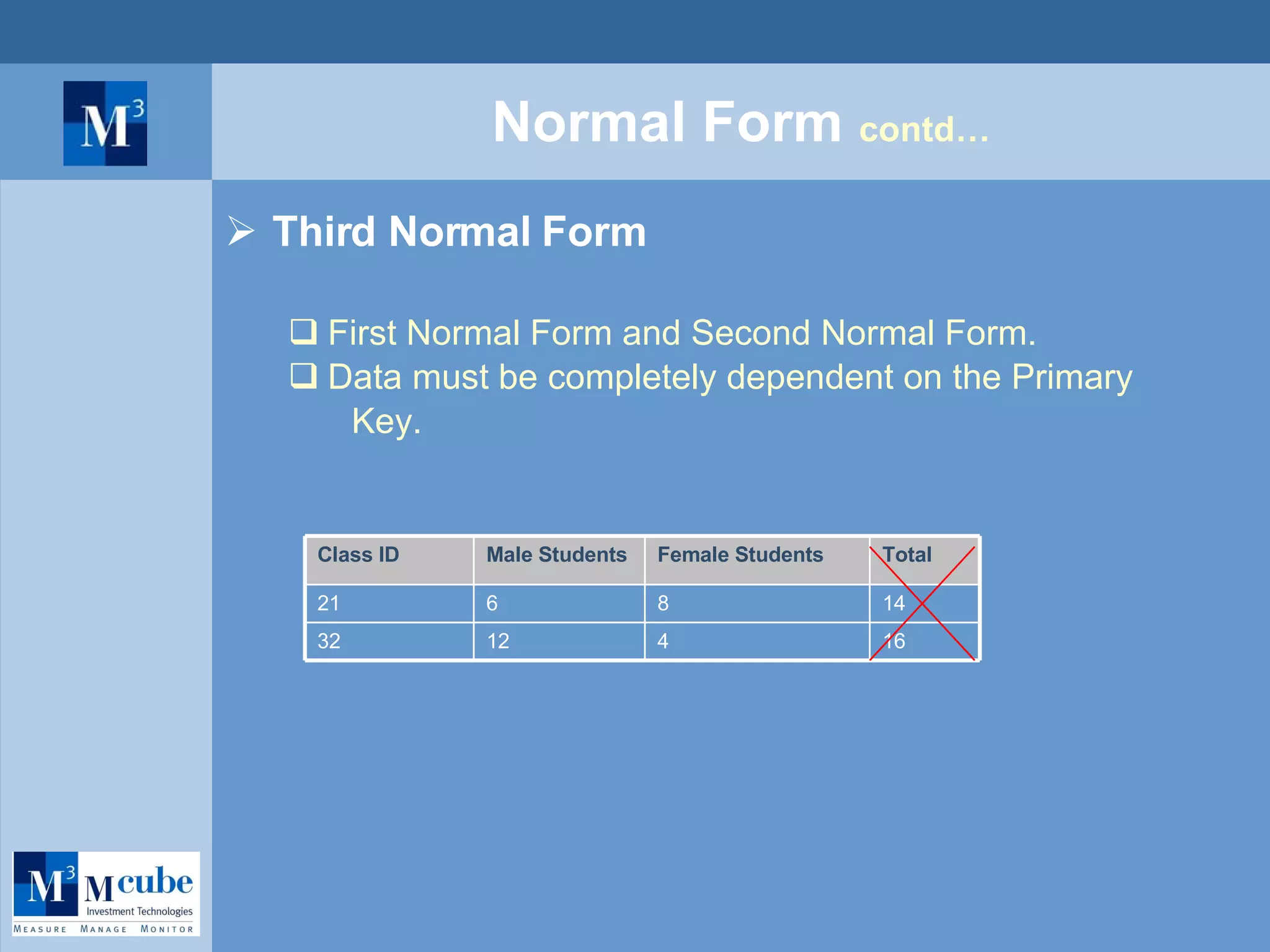
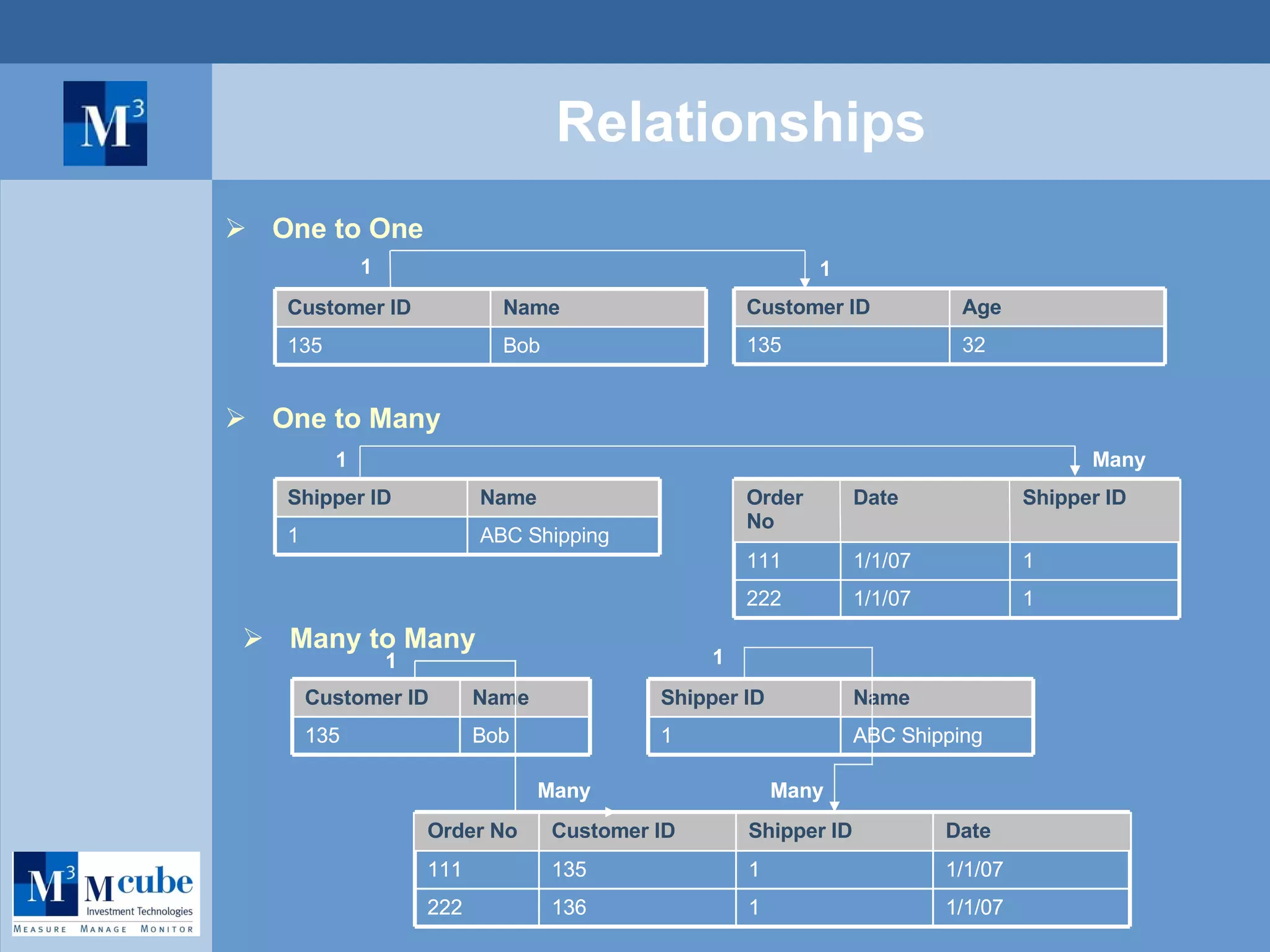
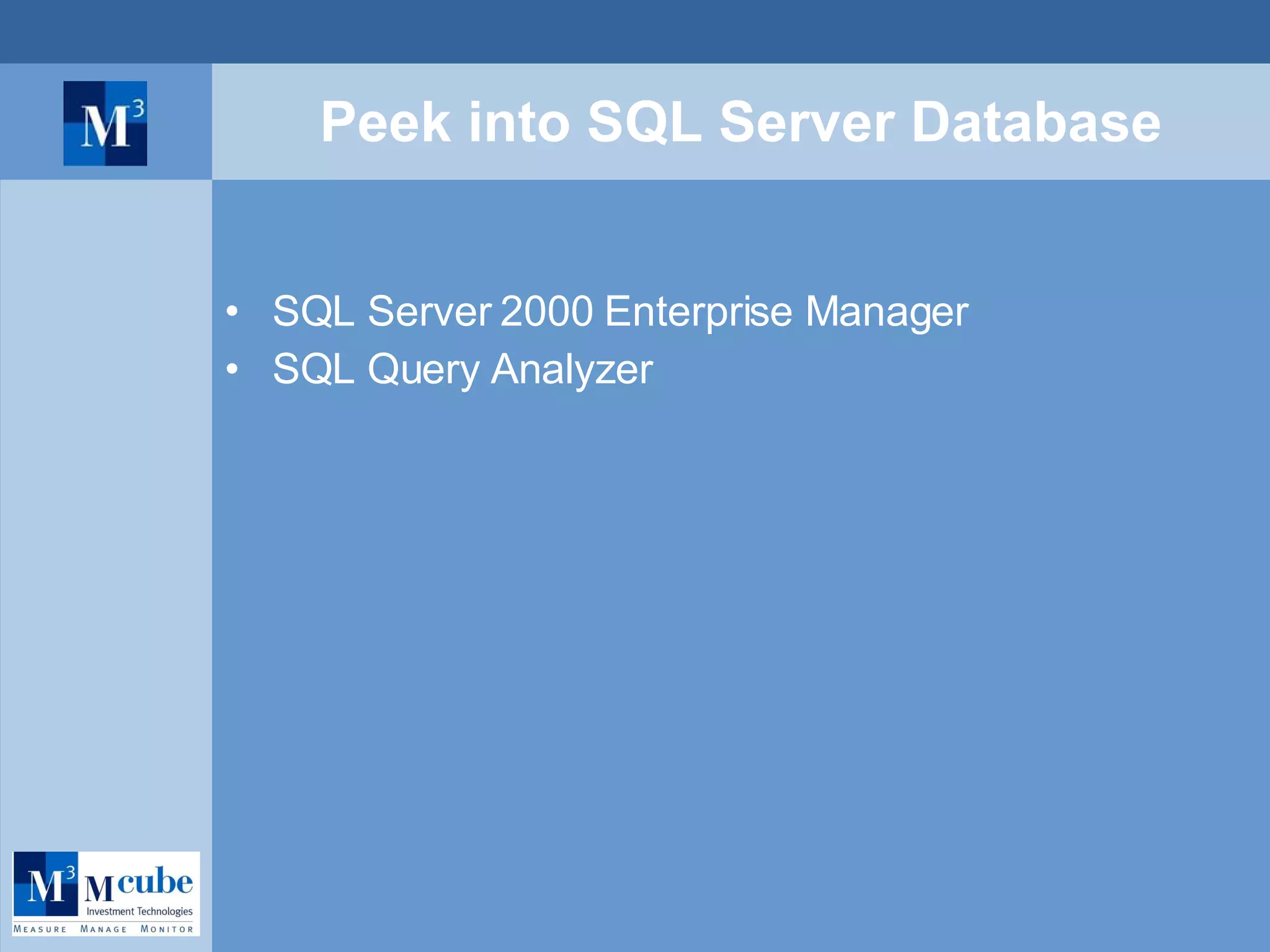
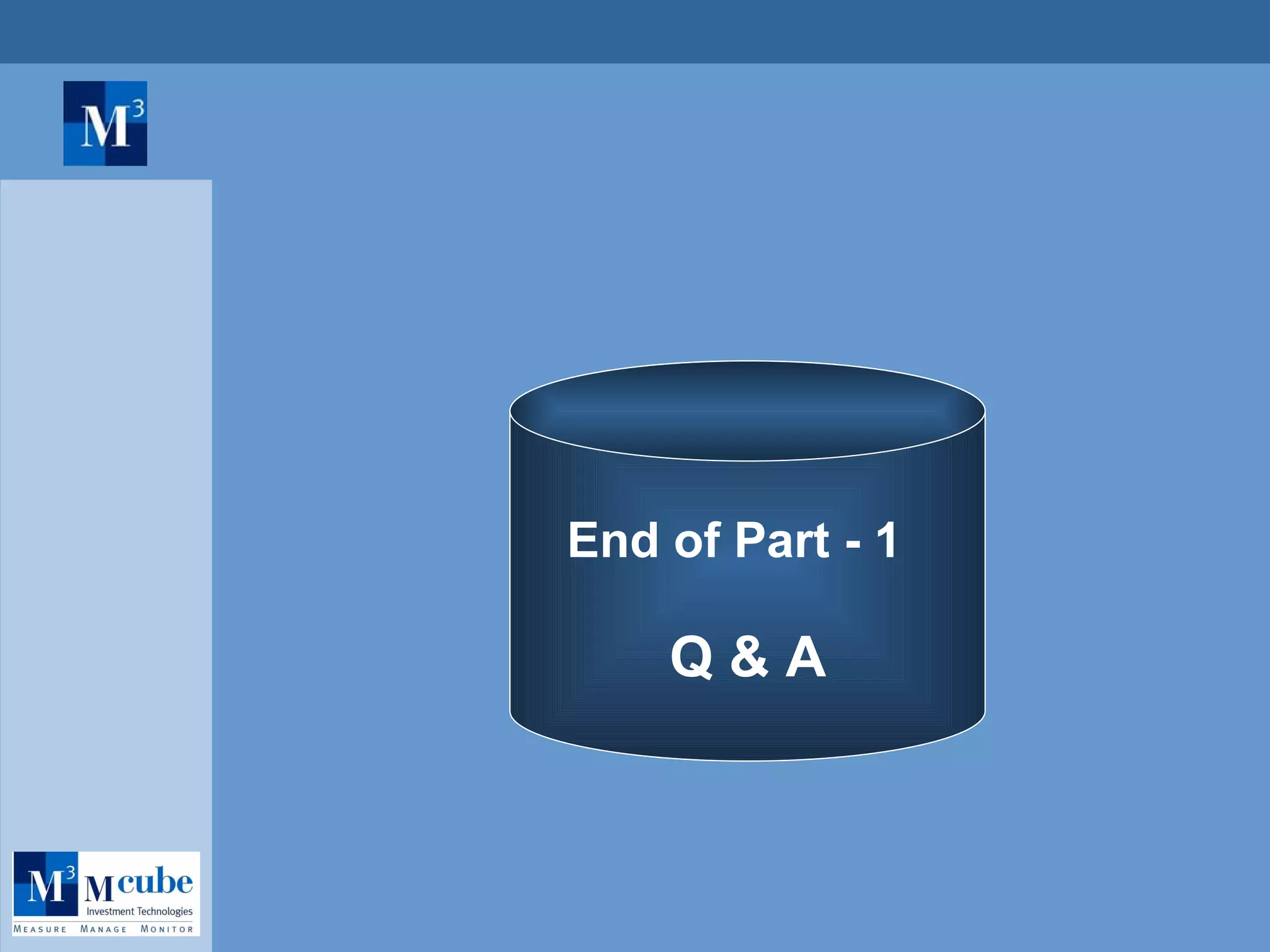
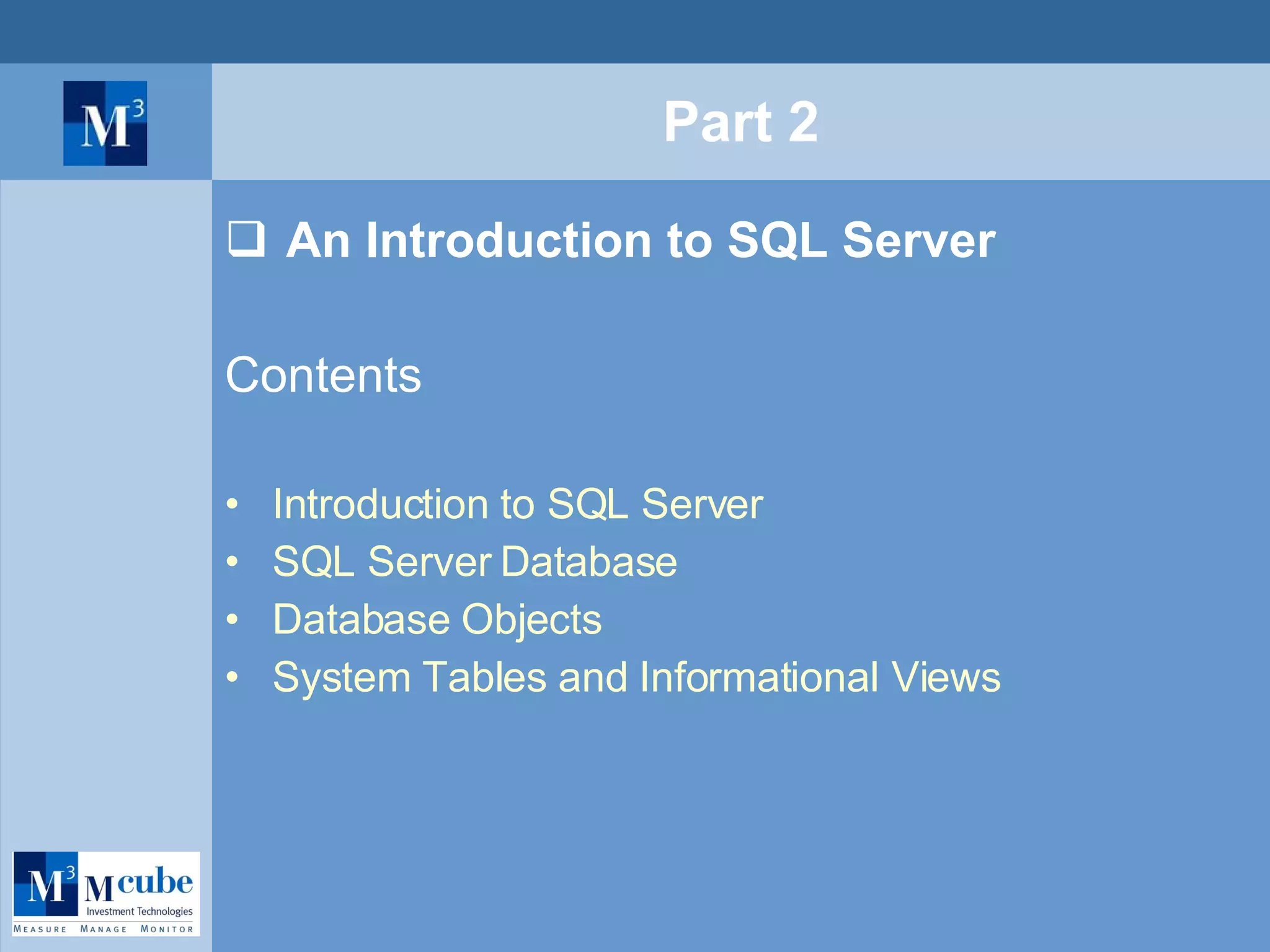
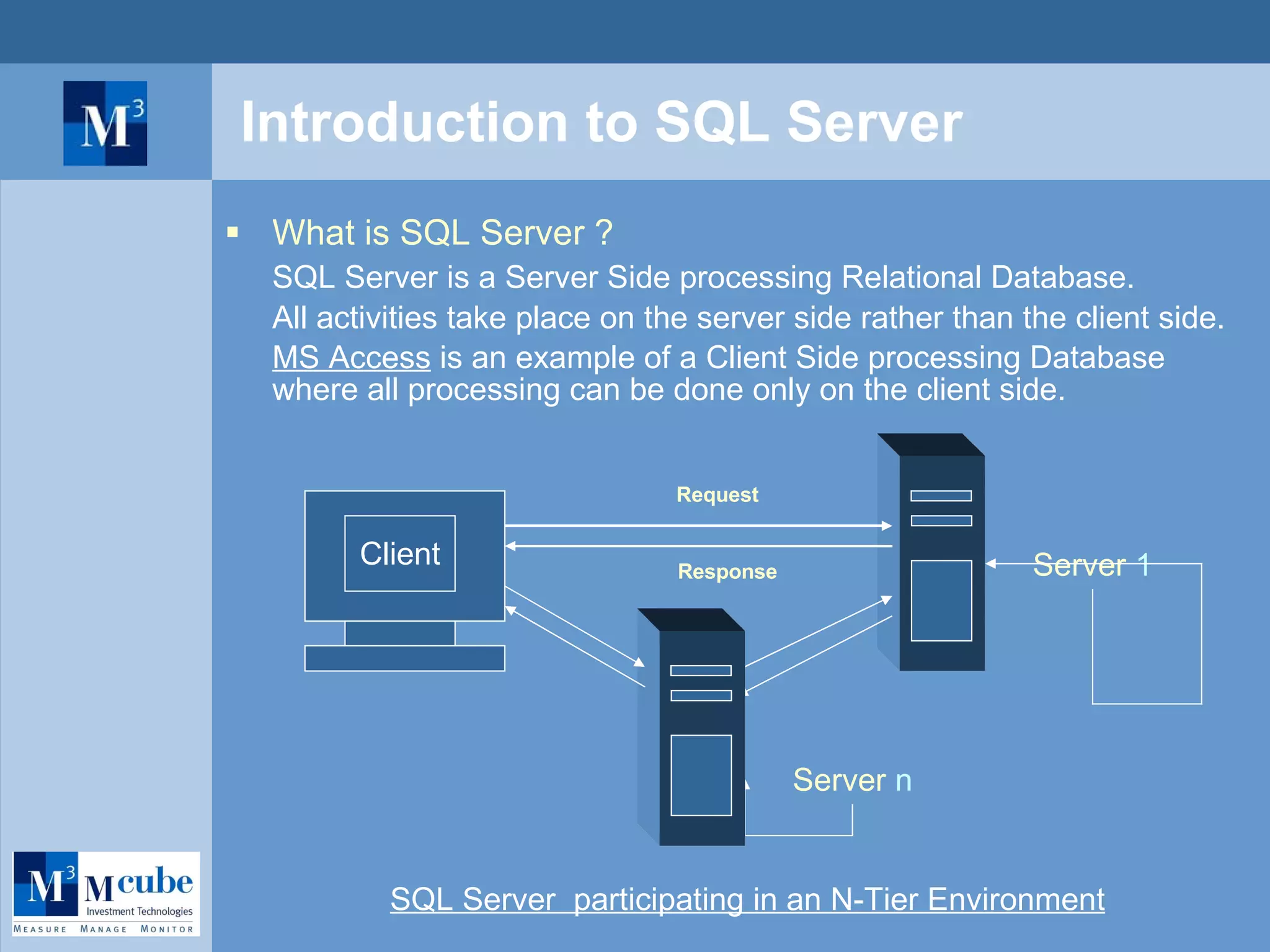

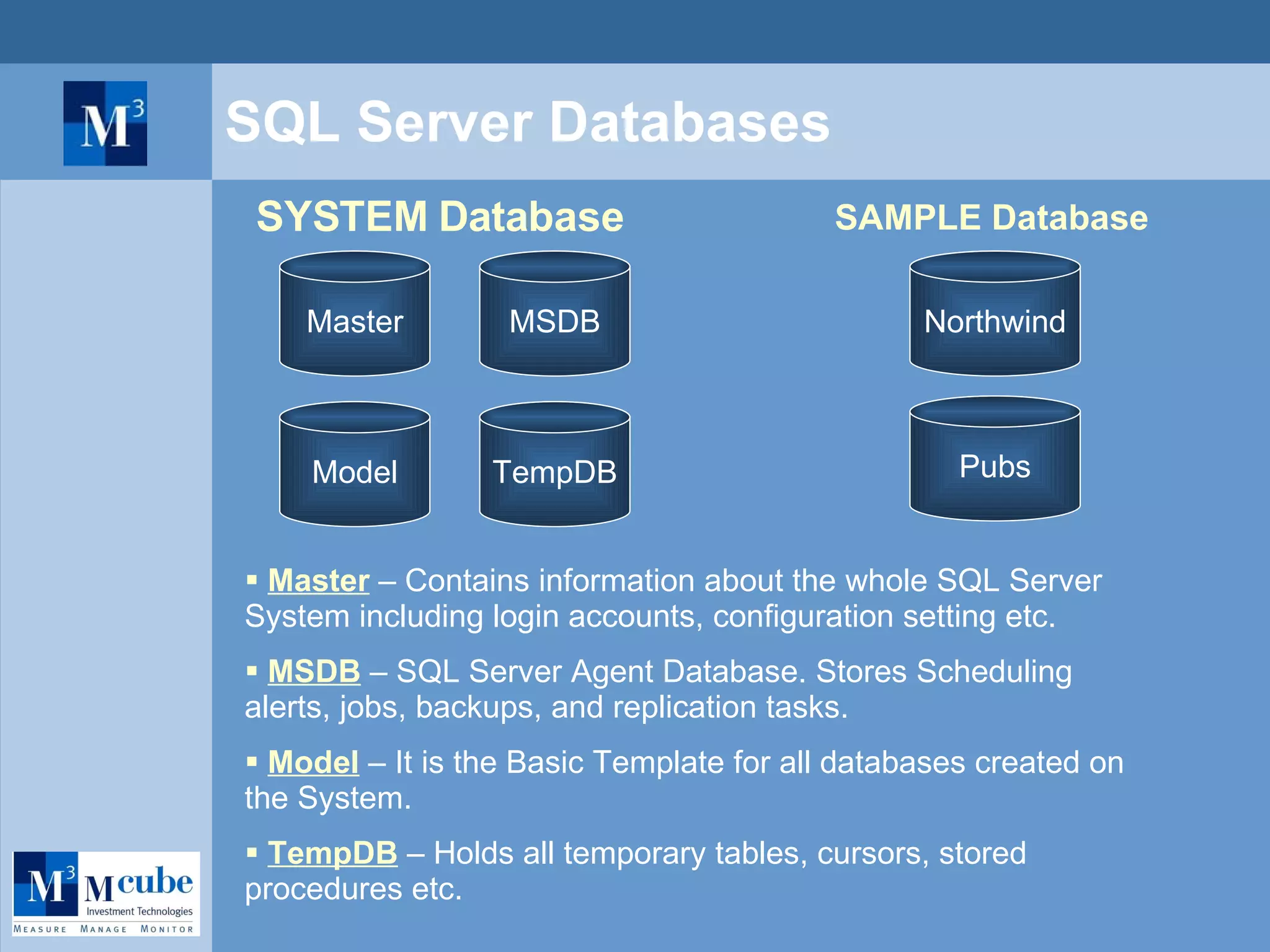
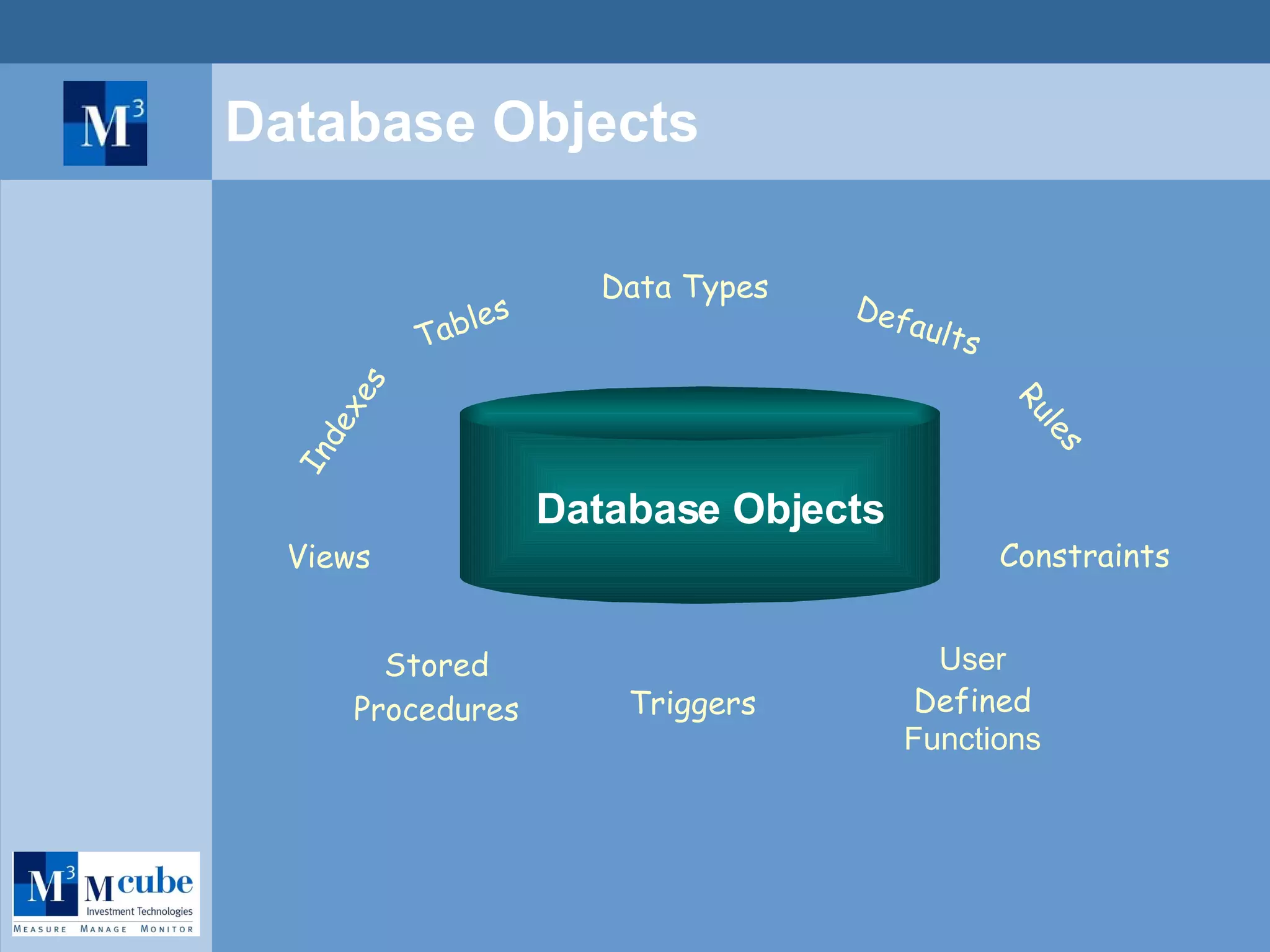
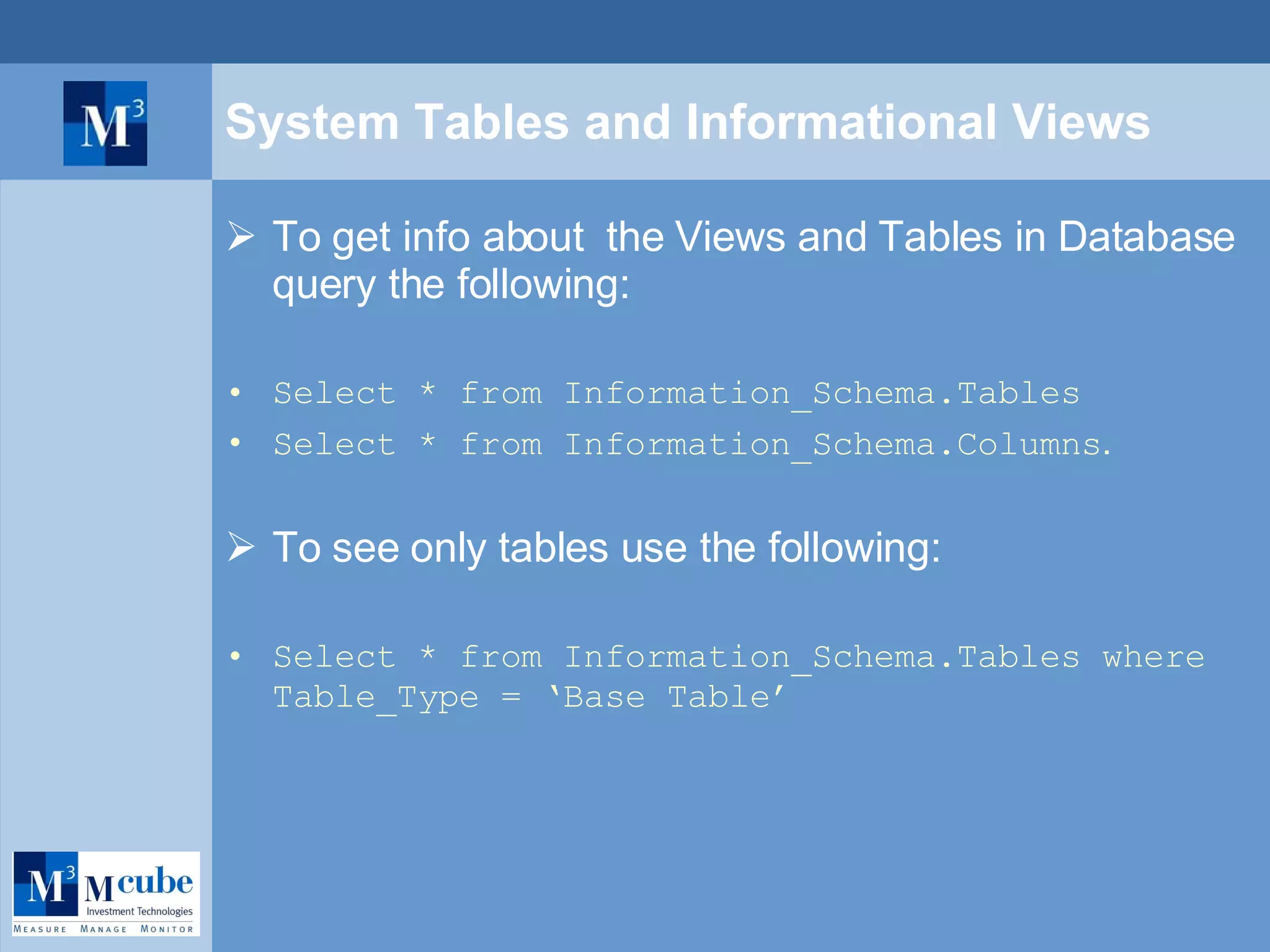
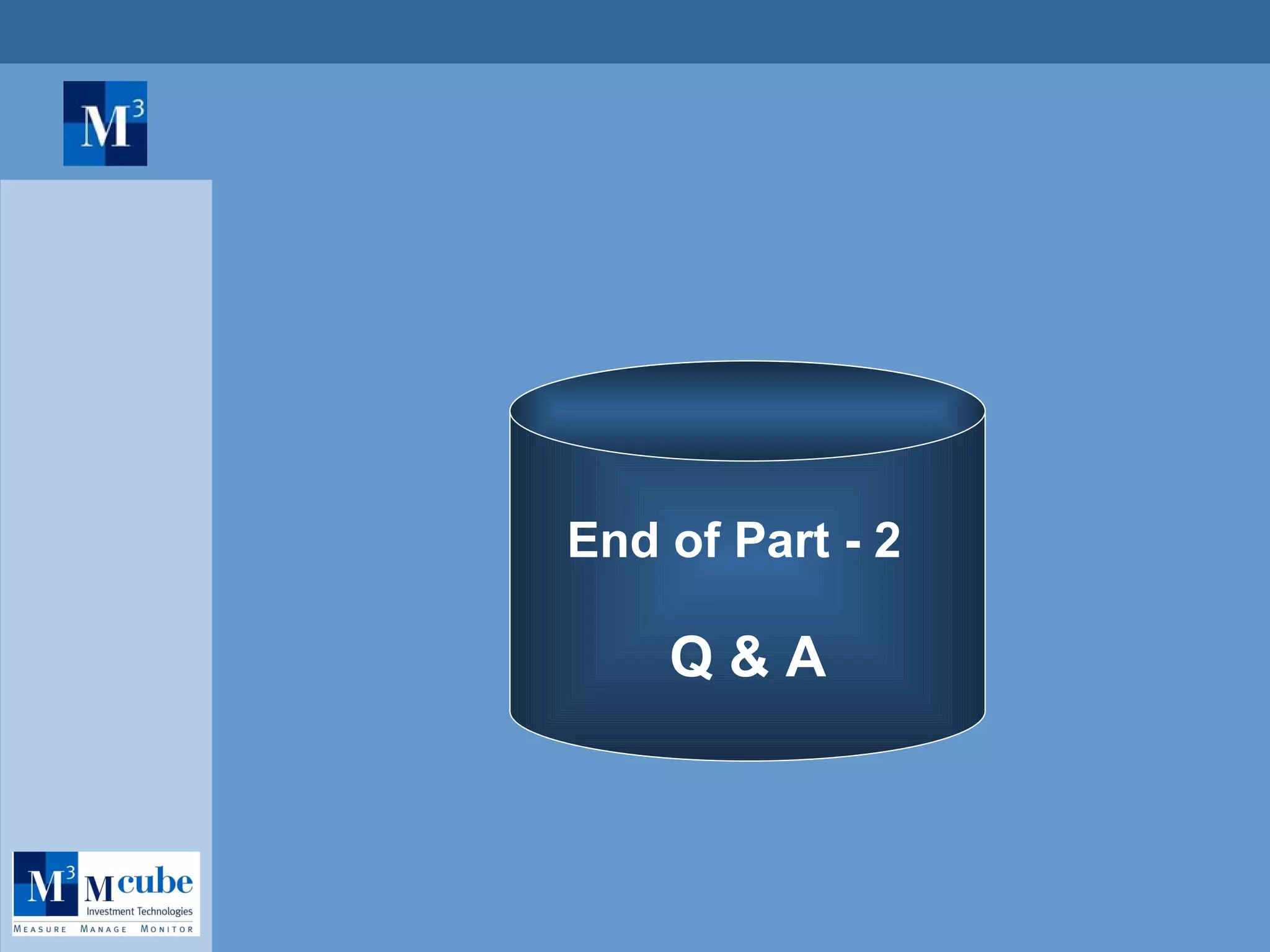
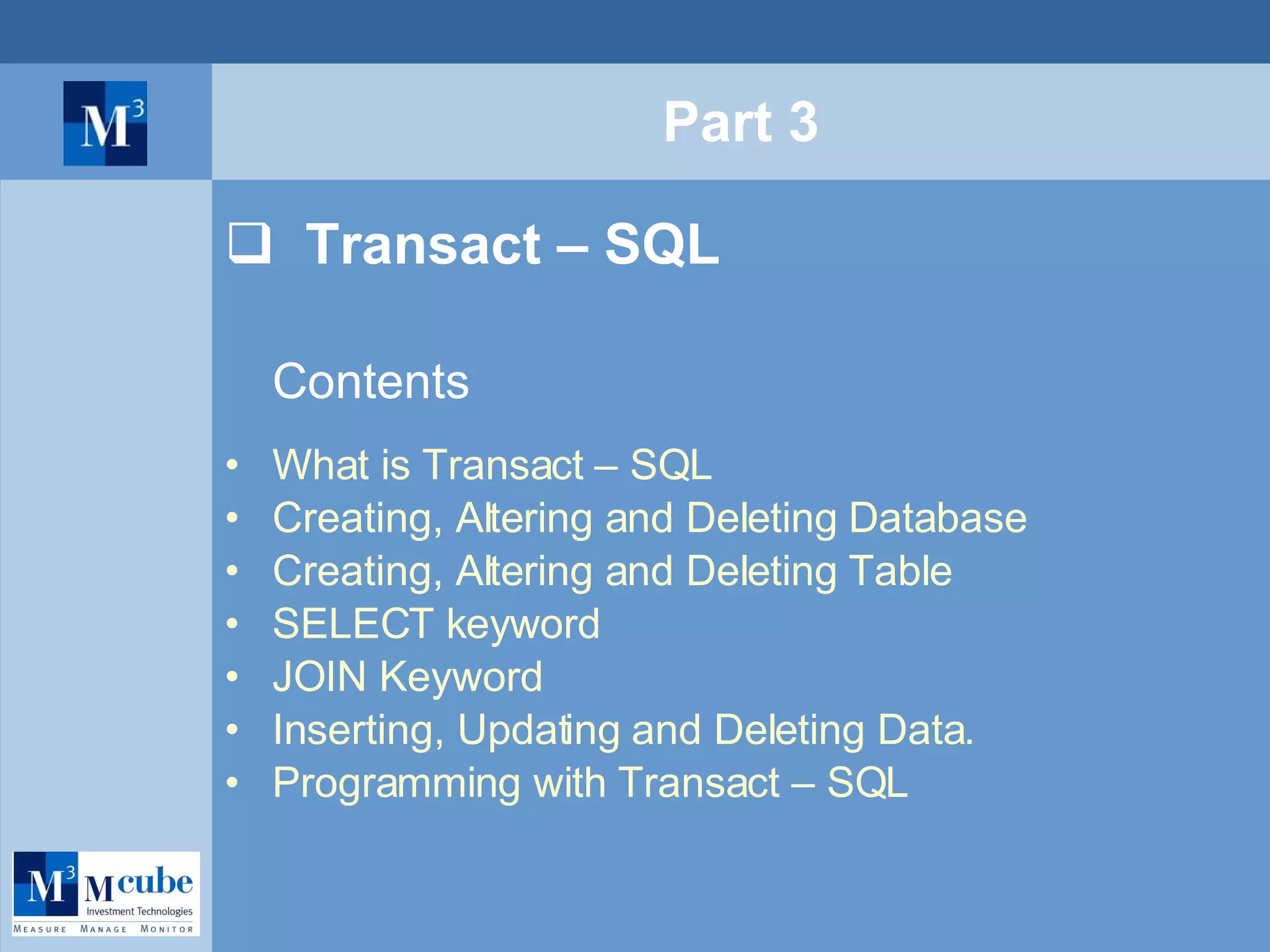
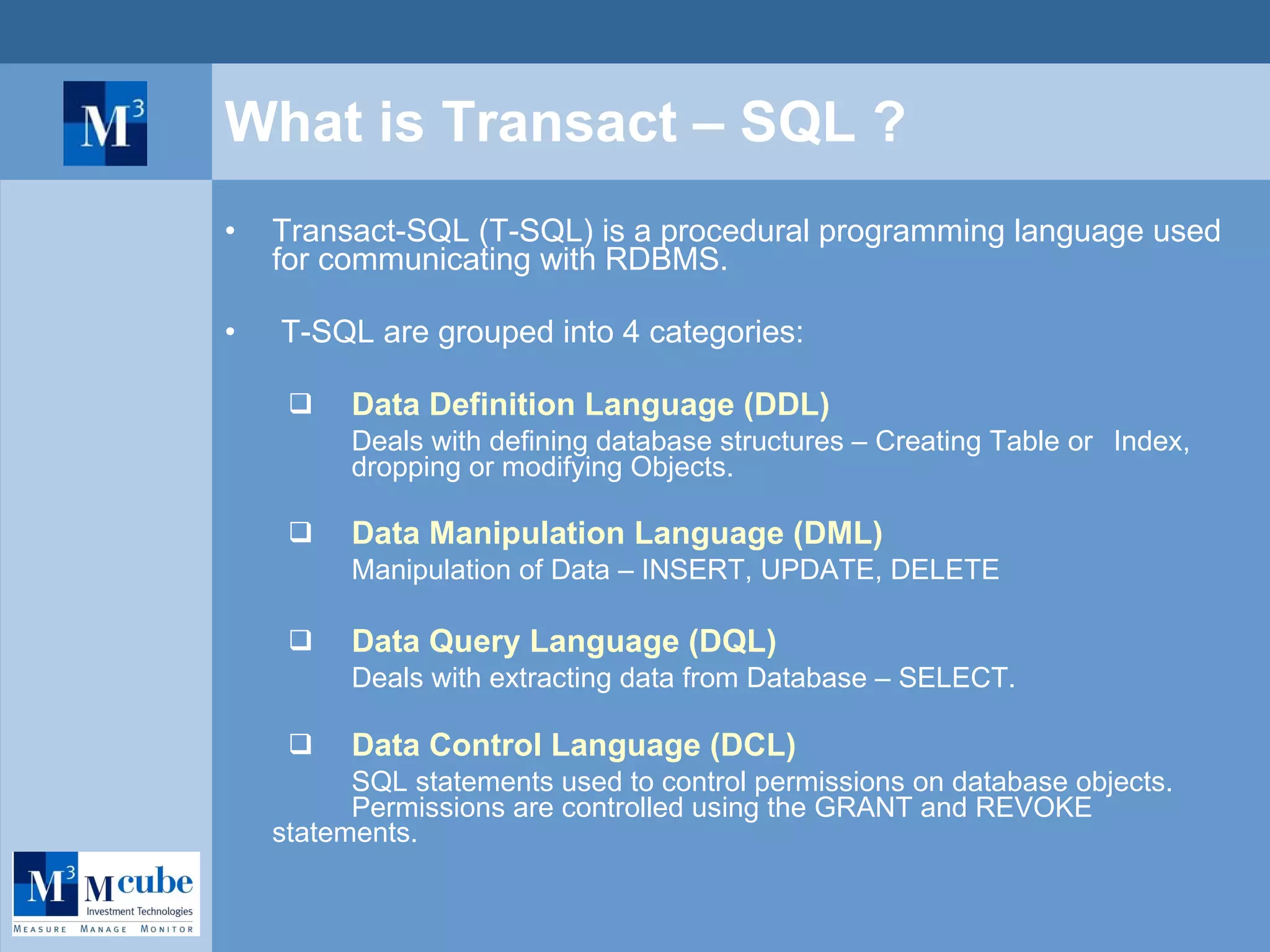
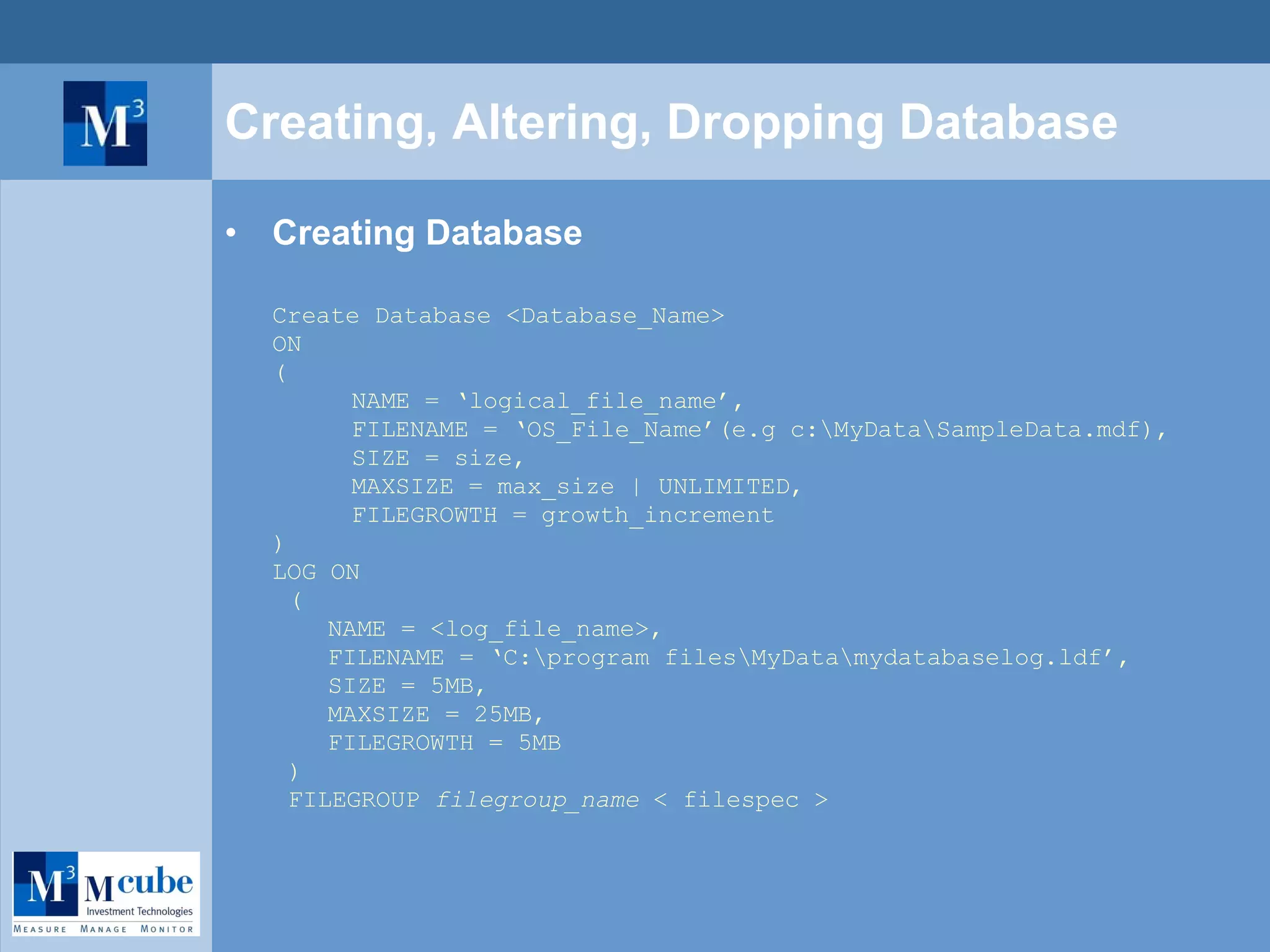

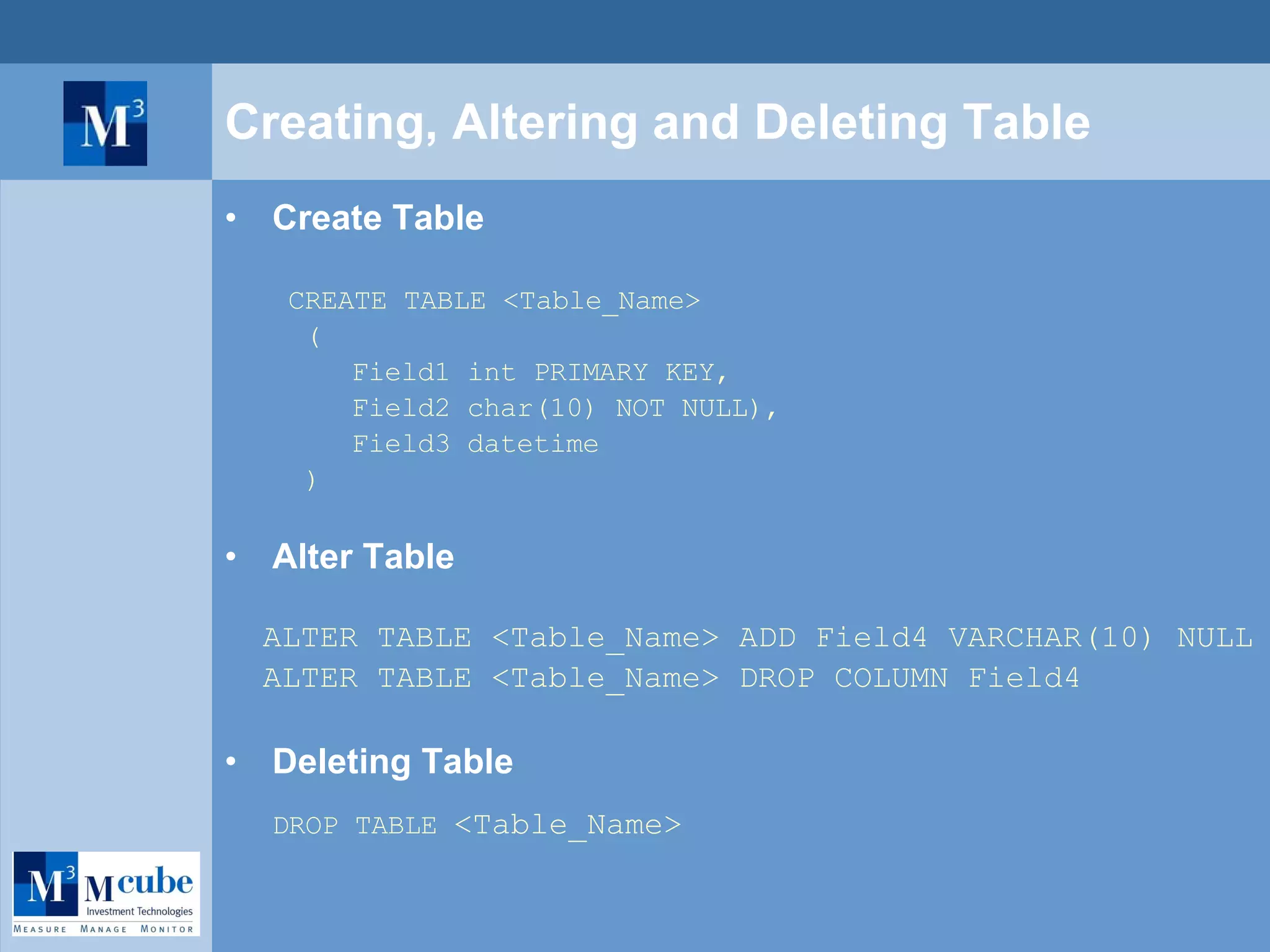
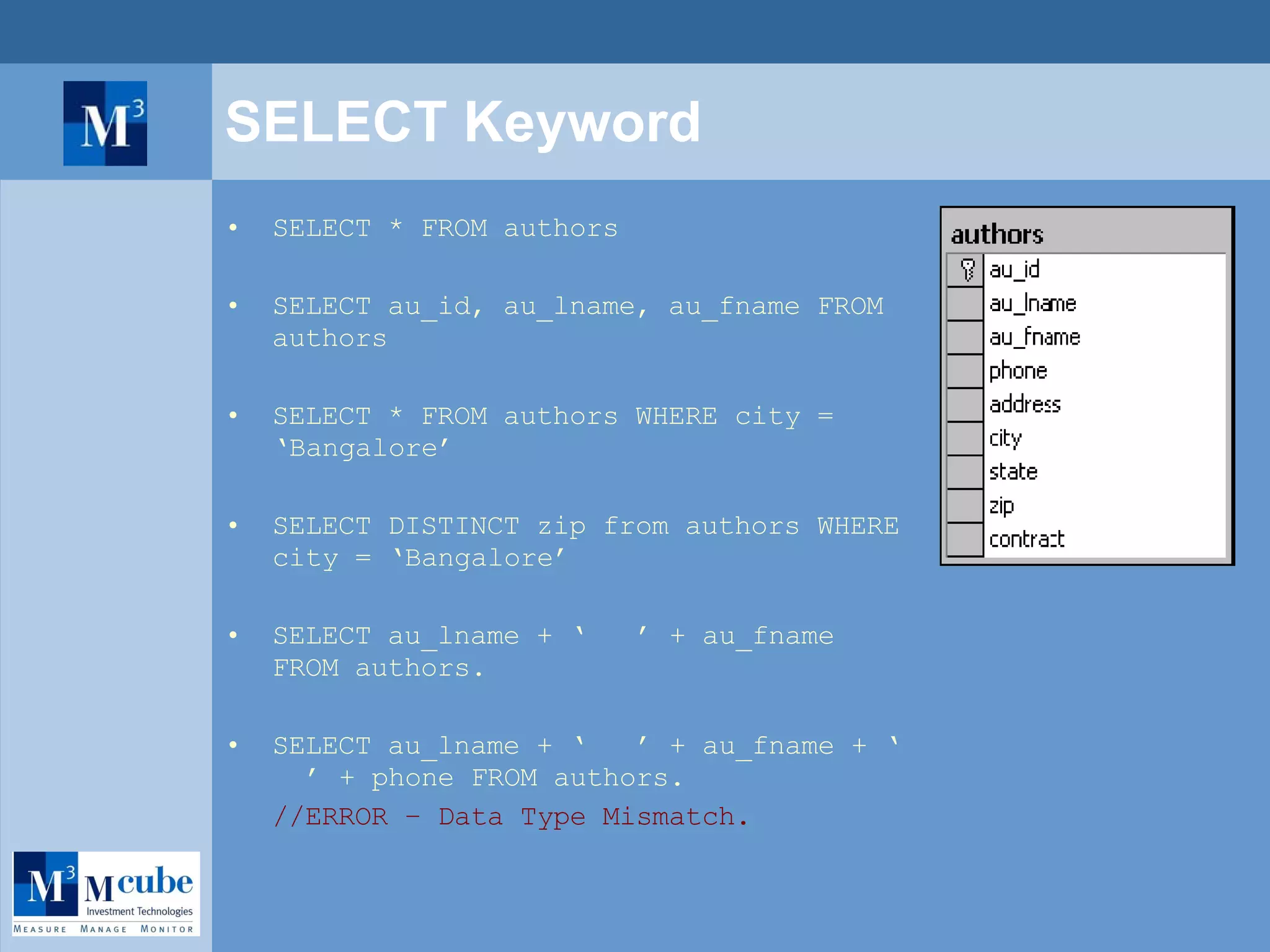


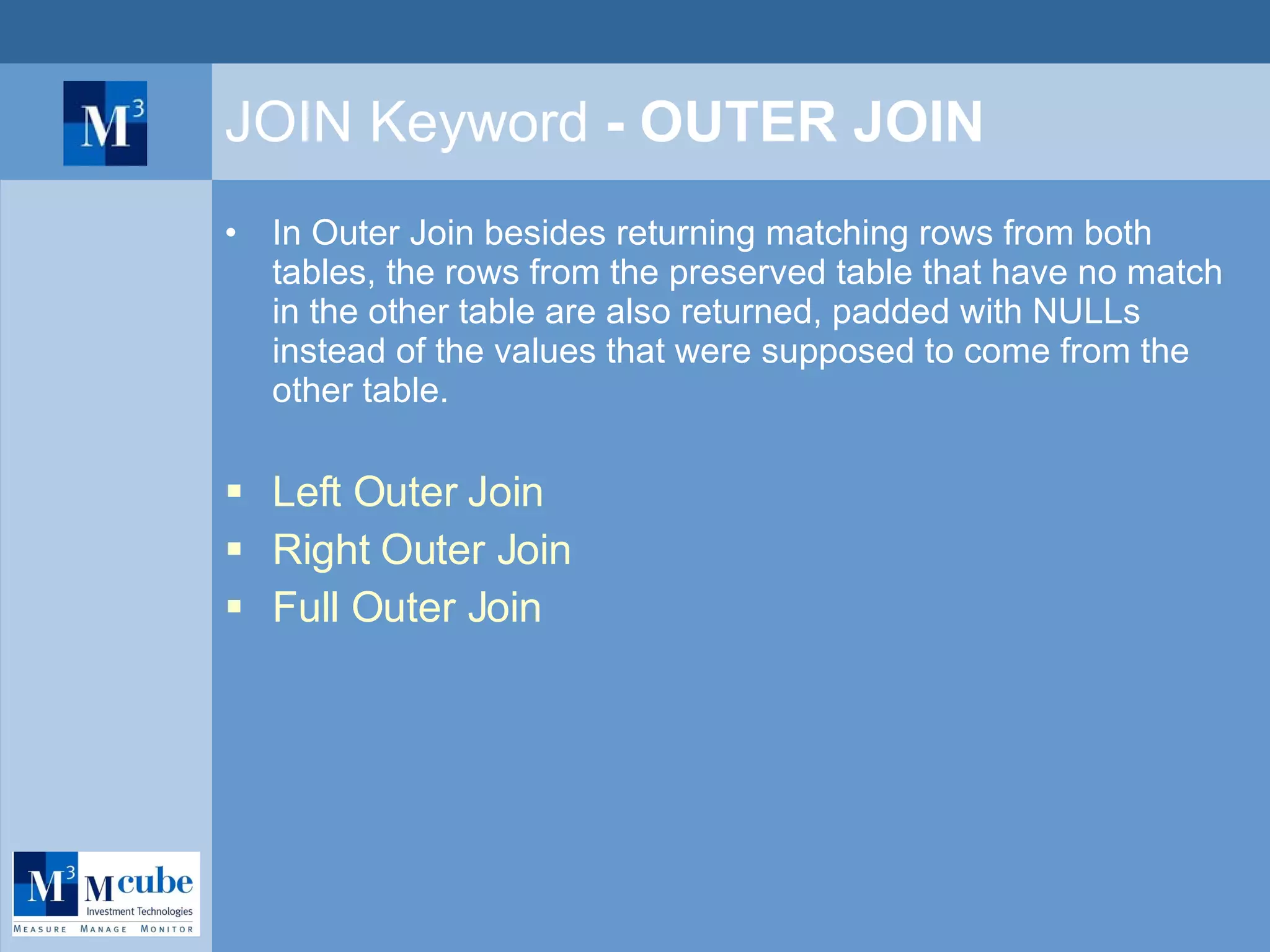
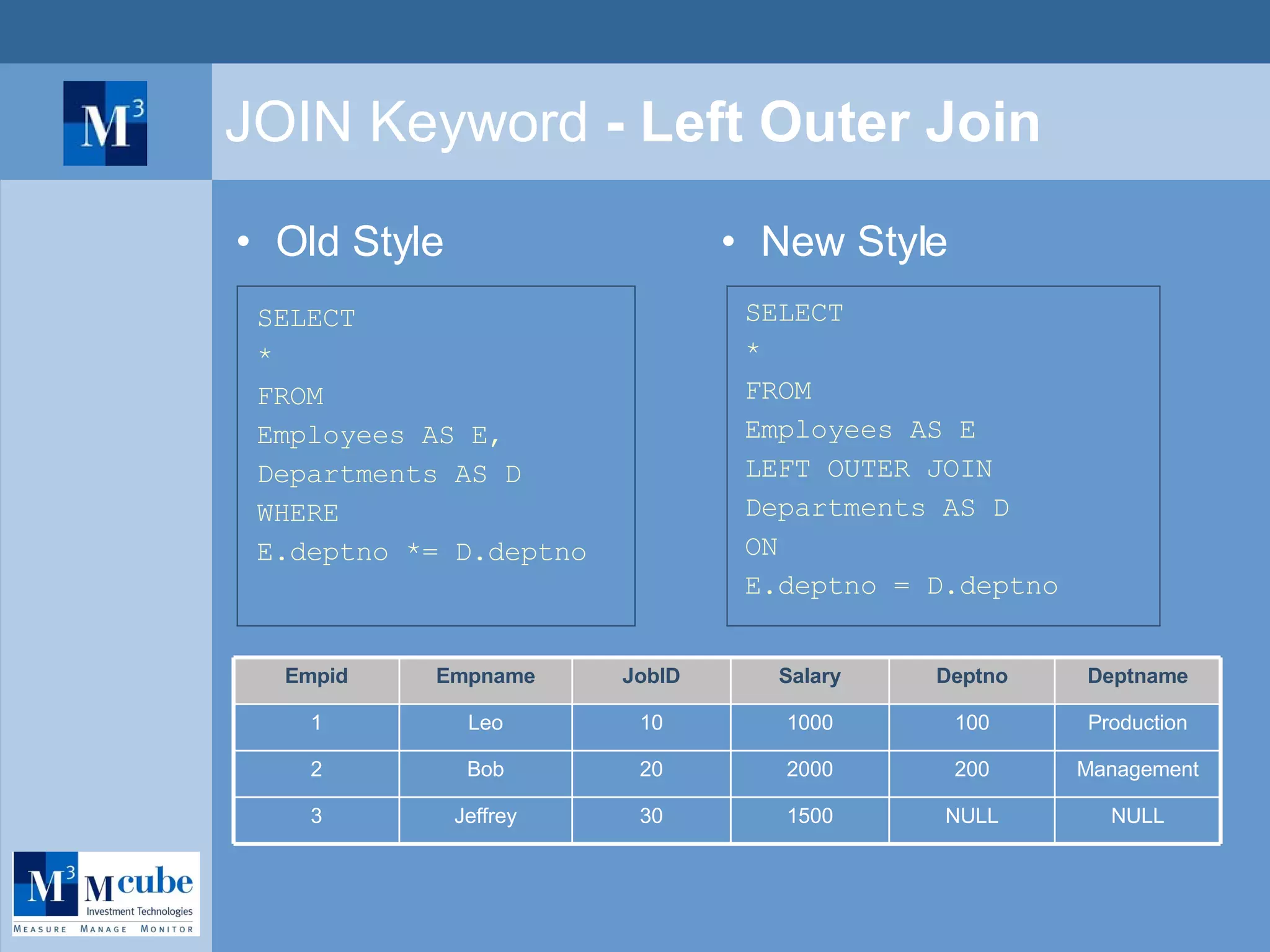
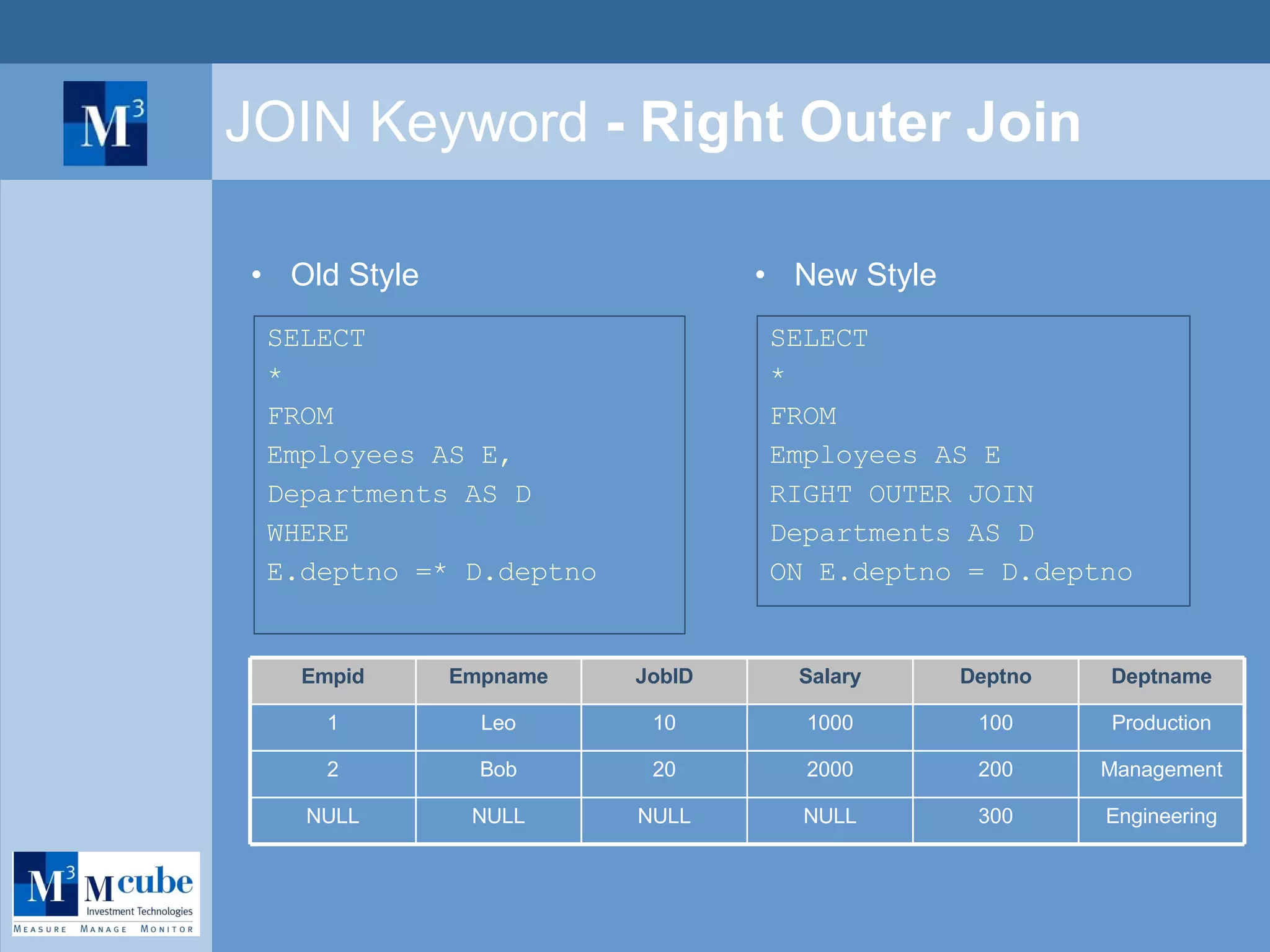
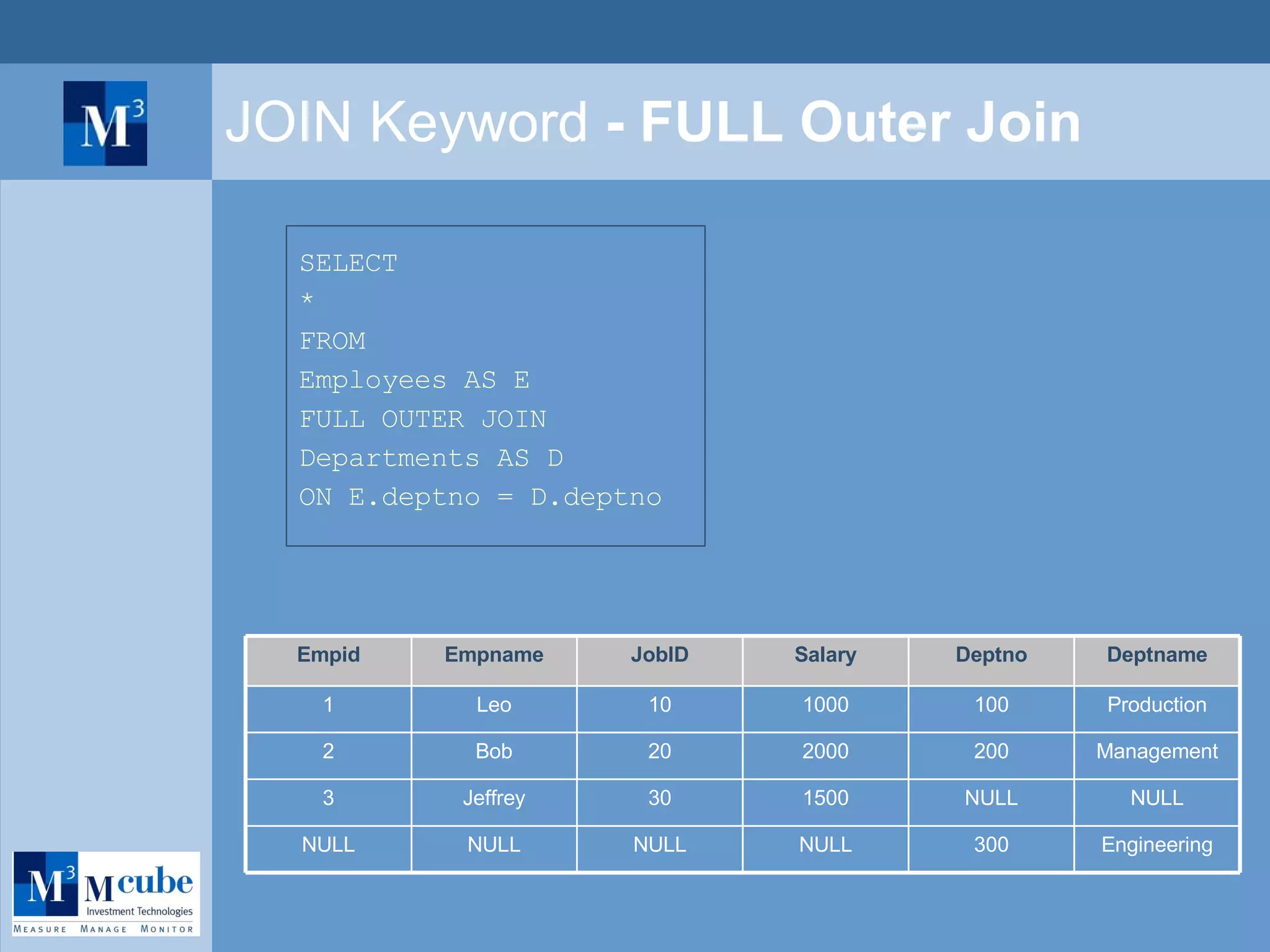
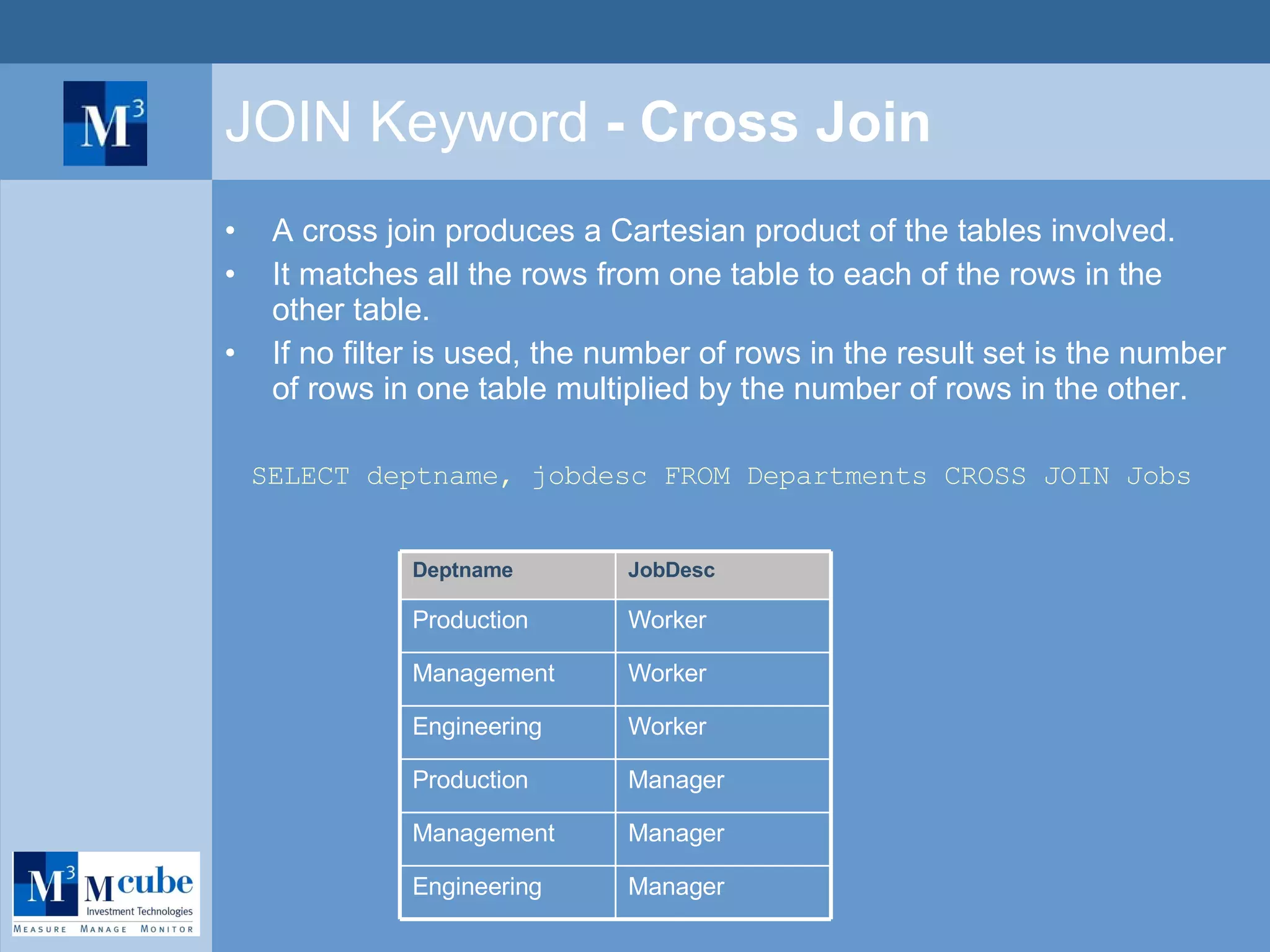
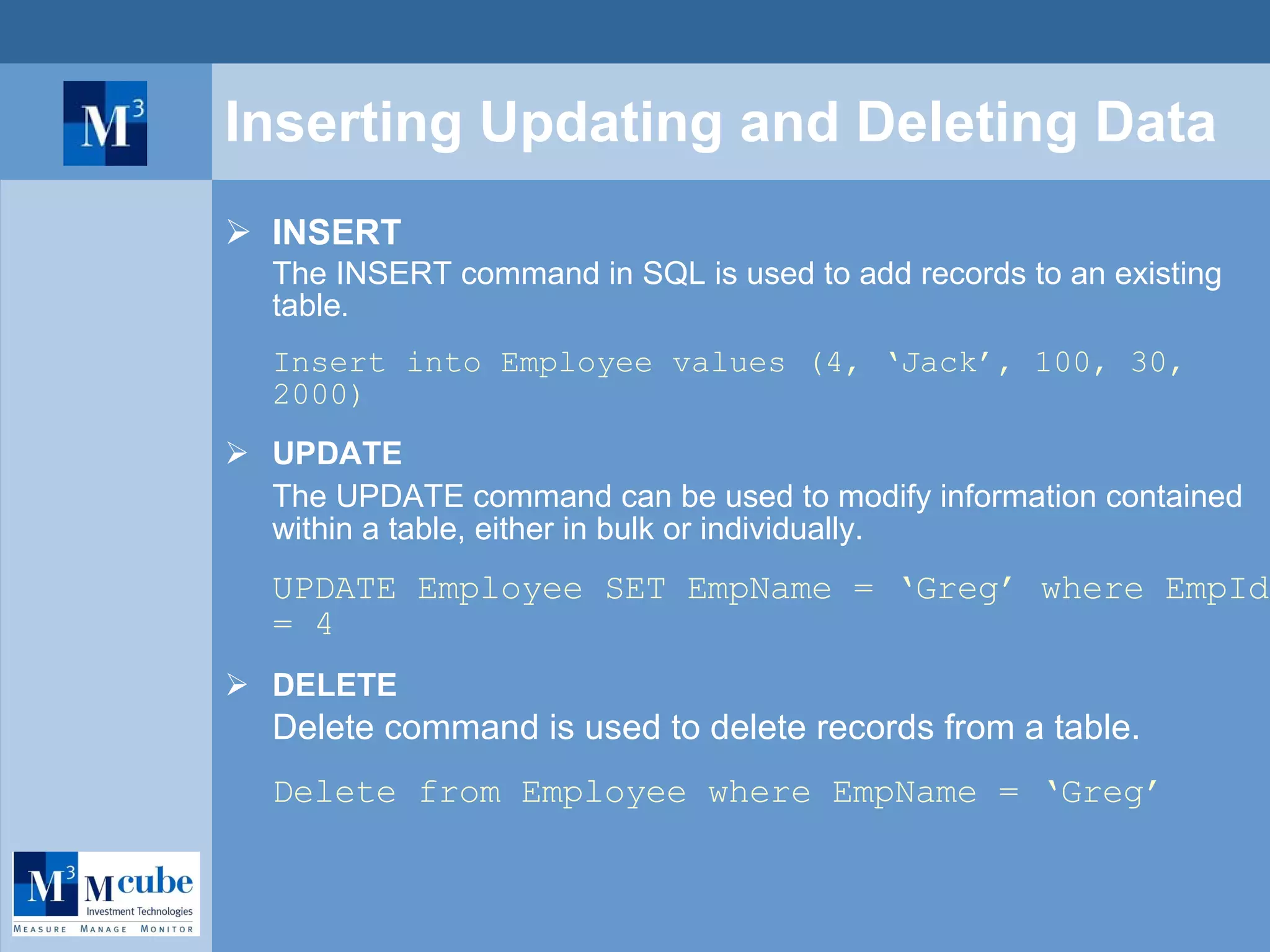
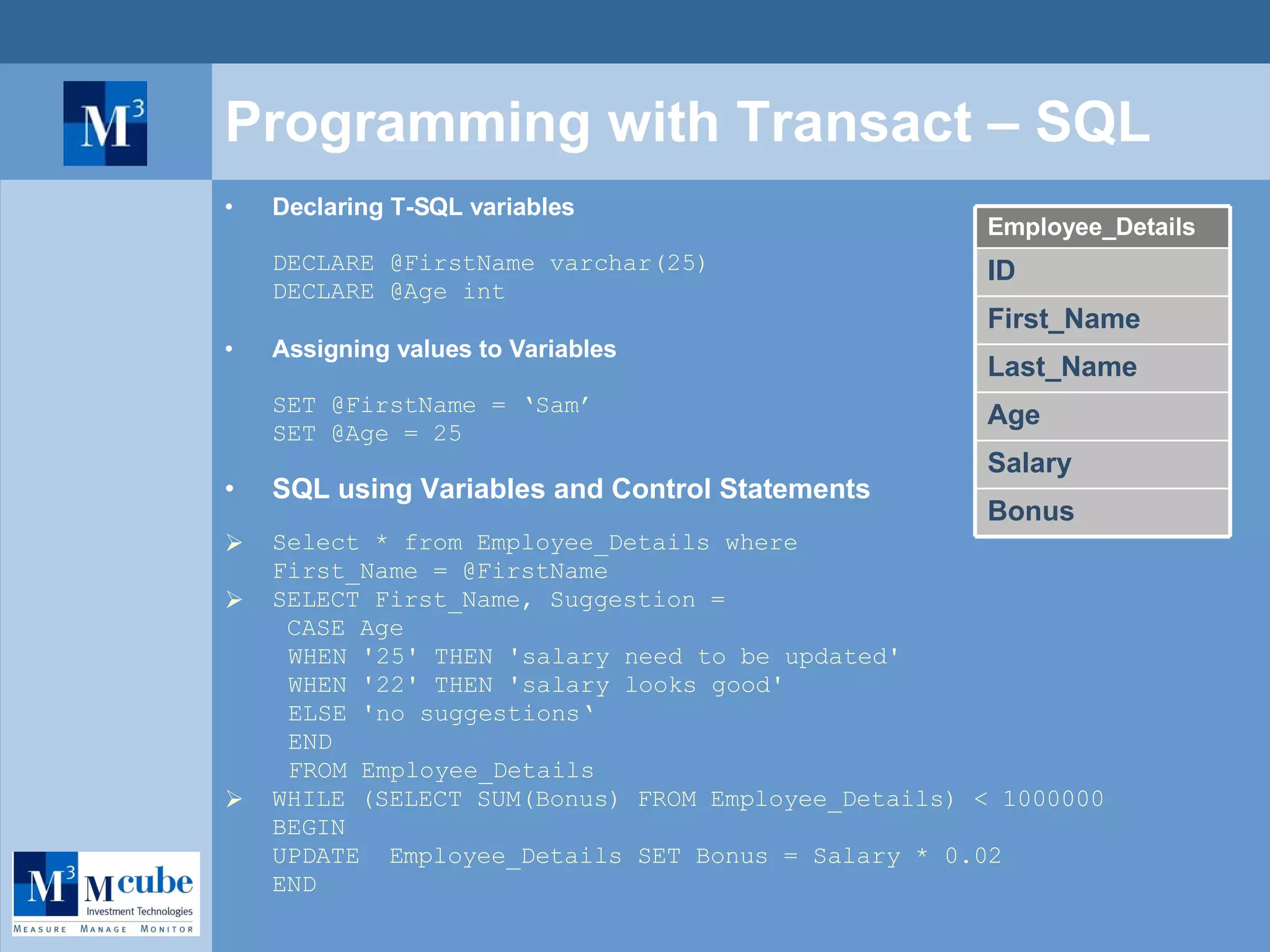
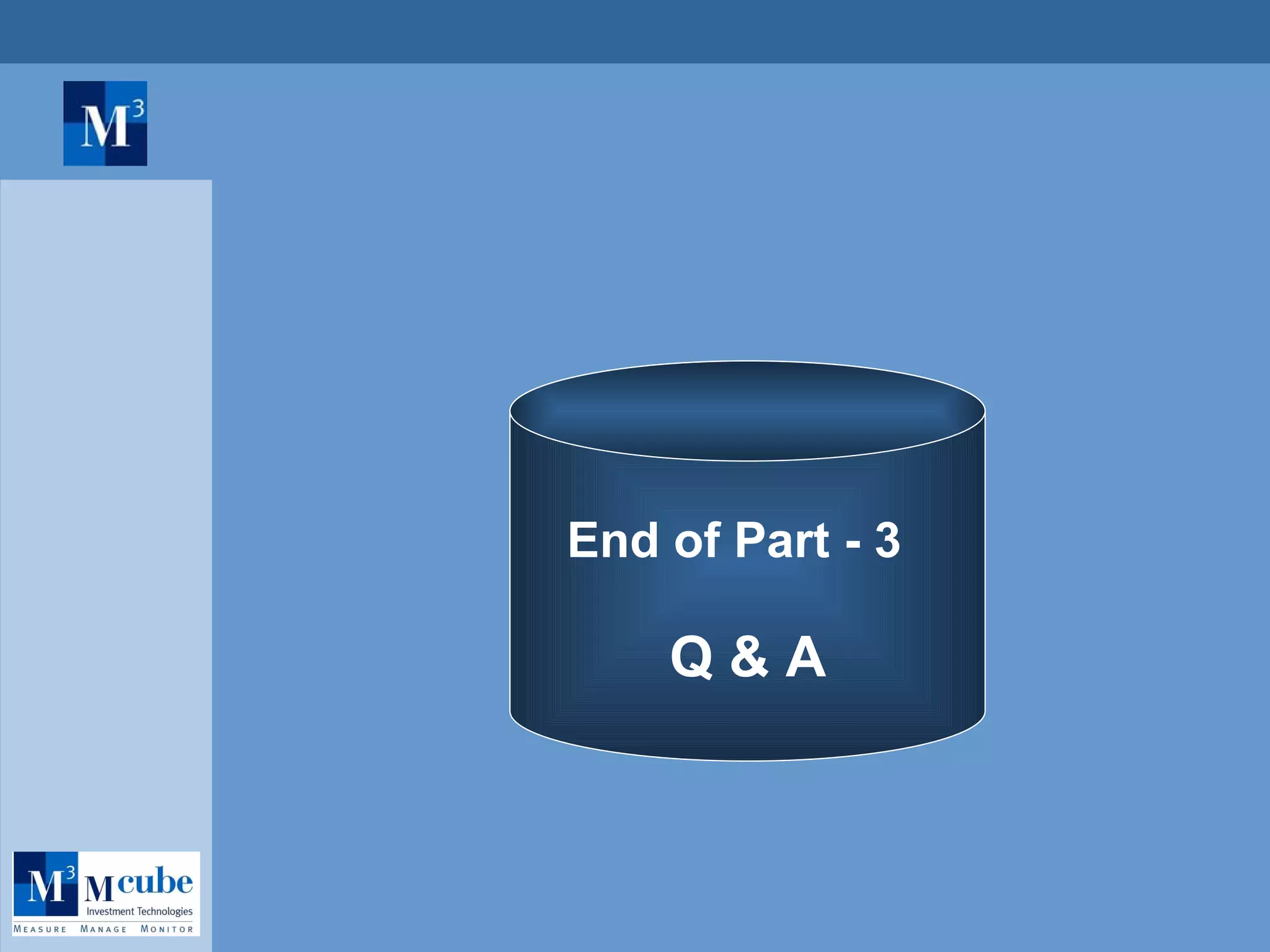

![Creating and Using Views Views are saved SQL Statements. It cannot store data. It can only refer to data present in tables. CREATE VIEW <view name> [optional] WITH SCHEMABIND [optional] WITH ENCRYPTION AS <select statement> GO Creating a view with the SCHEMABINDING option locks the tables being referred by the view and prevents any changes that may change the table schema. If a view is created with ENCRYPTION option, Users will not be able to see the definition of the View after it is created. The view definition will be stored in an encrypted format in the system table named ‘syscomments’ Views can be used to insert, update and delete data. Cannot use order by in SELECT statement in VIEW.](https://image.slidesharecdn.com/sql-server-2000-1222777393078302-9/75/Sql-Server-2000-38-2048.jpg)
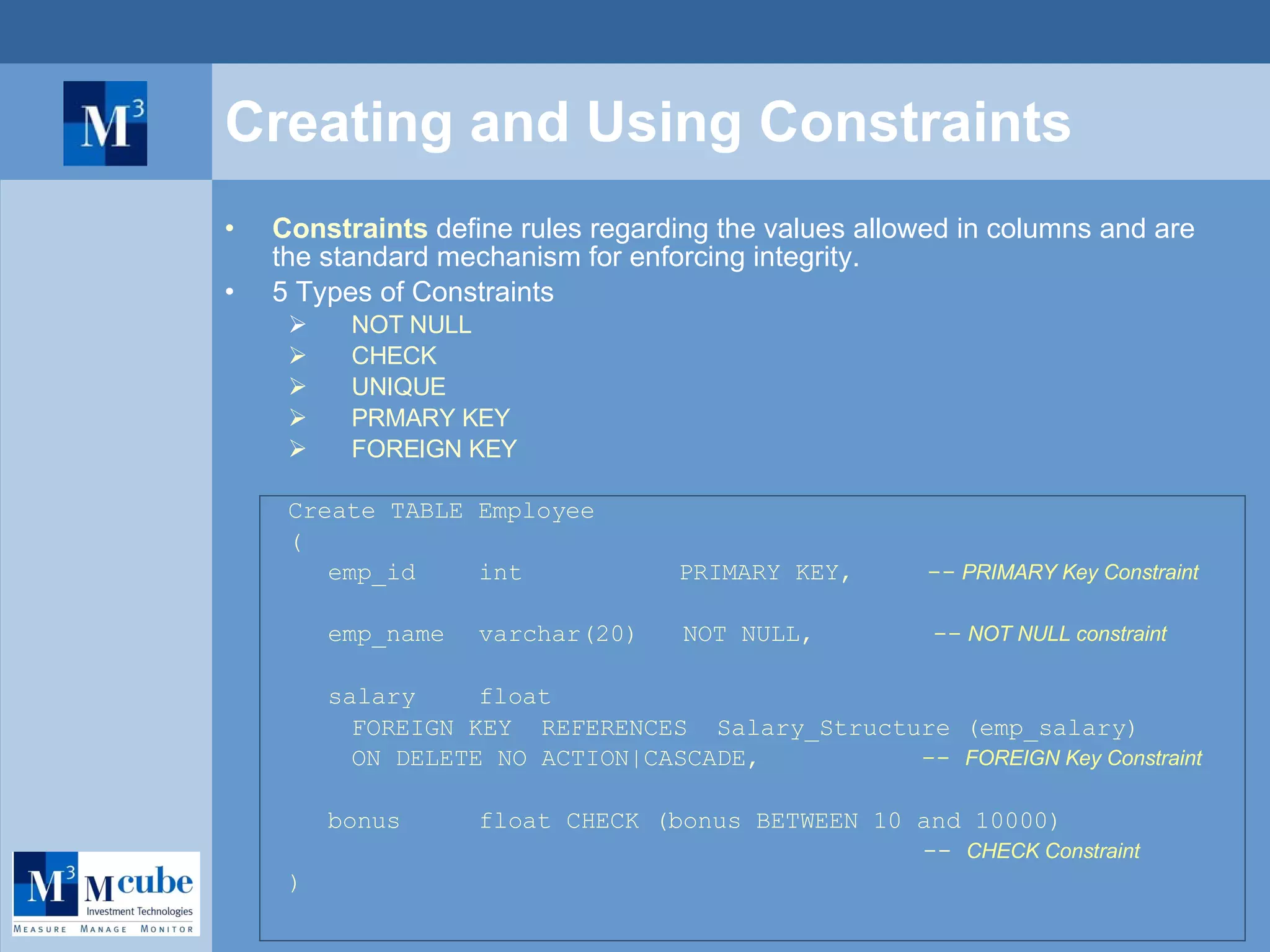
![Creating and Using Stored Procedures Stored Procedures are created using T_SQL SQL Server compiles each stored procedure once and then reutilizes the execution plan. This results in tremendous performance boosts when stored procedures are called repeatedly. Create Procedure [dbo.][displayCurstomers] ( @customer_id int ) AS DECLARE @count_product int SELECT @count_product = count(product) from Customers WHERE Customerid = @customer_id RETURN @count_product Call the Stored Procedure as follows : dbo.displayCustomers <customer_id> A built-in security mechanism enables you to assign privileges for executing particular stored procedures.](https://image.slidesharecdn.com/sql-server-2000-1222777393078302-9/75/Sql-Server-2000-40-2048.jpg)
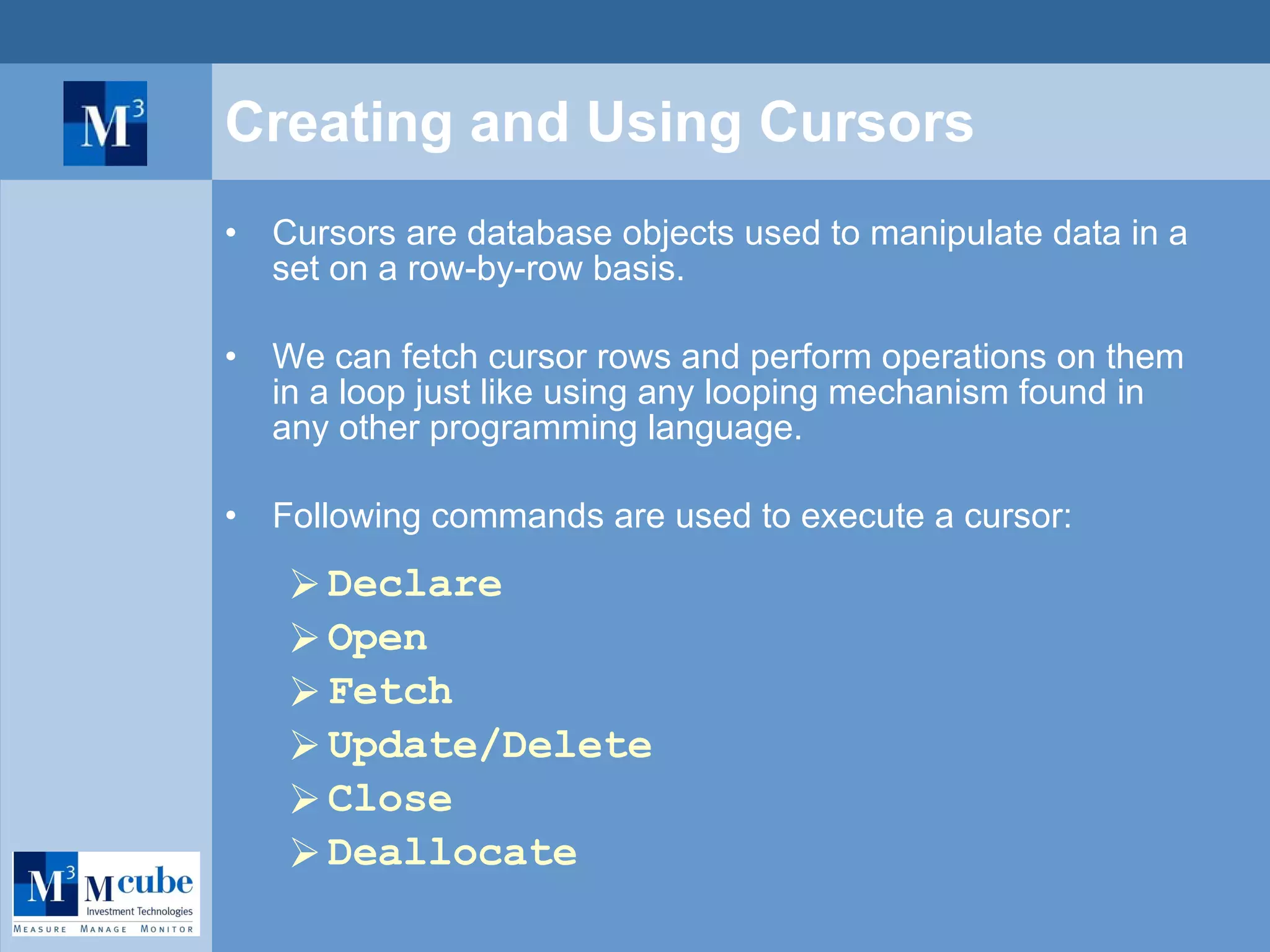
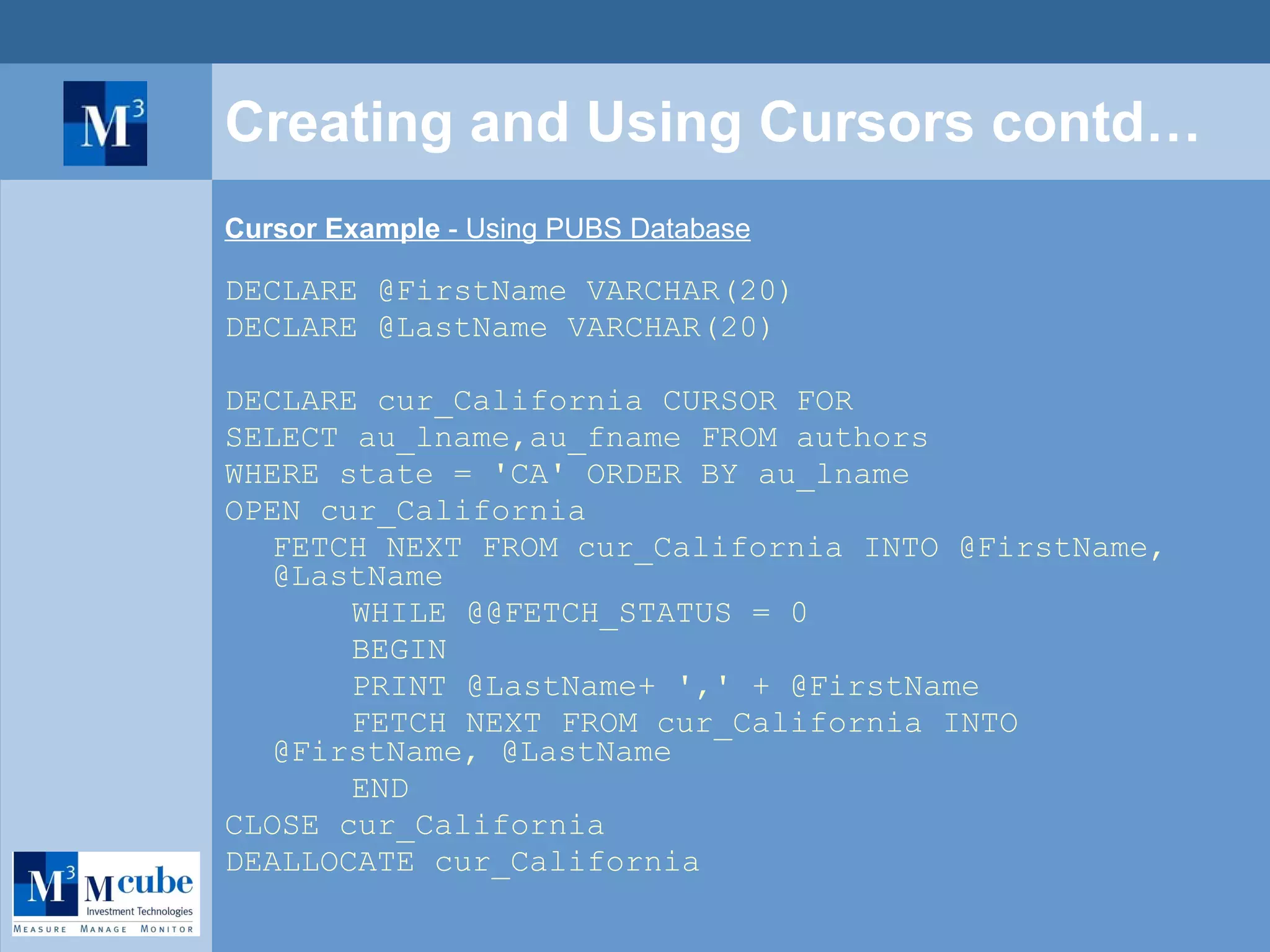

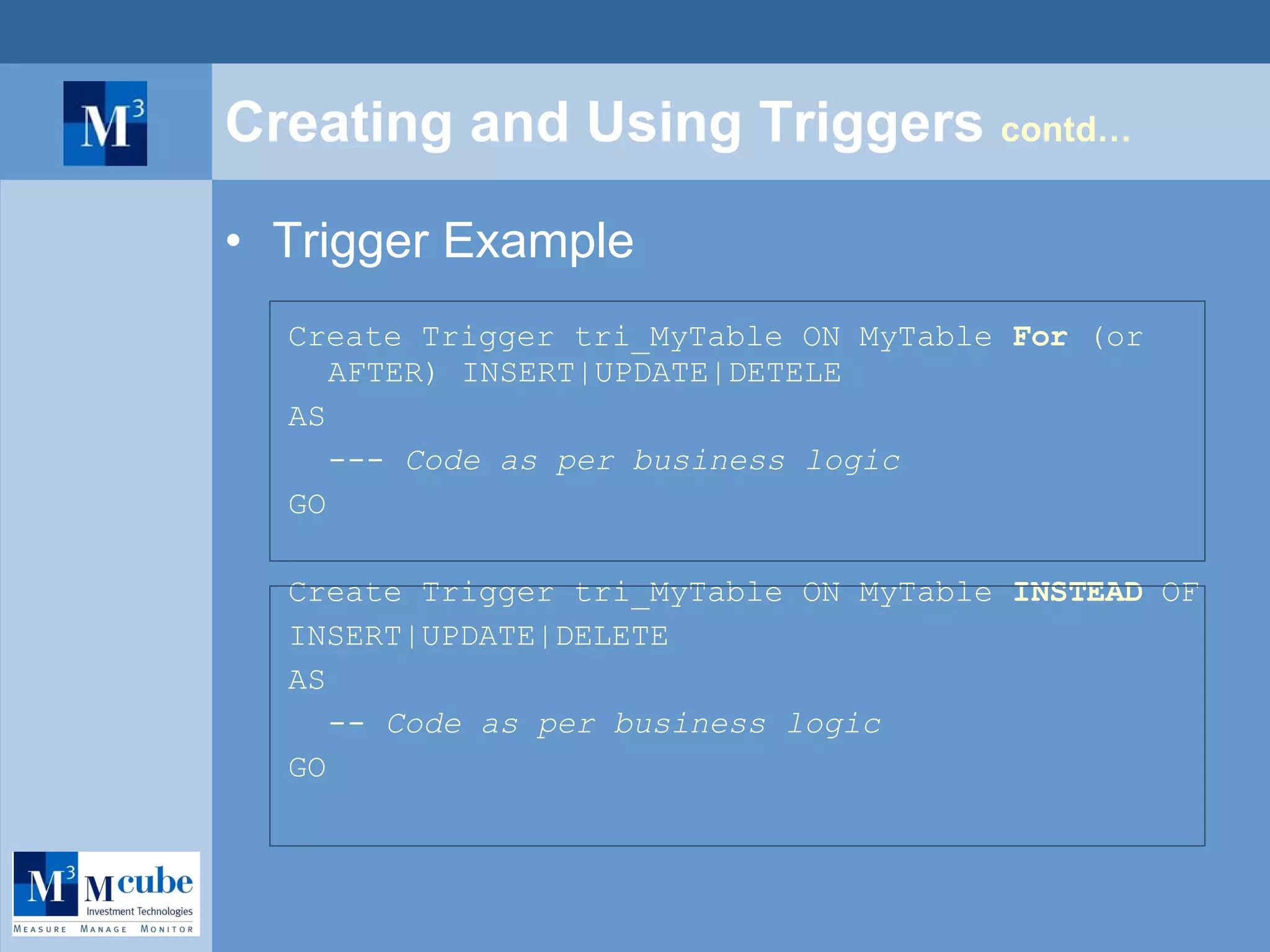
![Creating and Using Rules Rule is a database object bound to a column or user-defined data type that specifies what data can be entered in that column. Every time a user enters or modifies a value, SQL Server checks it against the most recent rule bound to the specified column. Create Rule test_rule AS @range >= 1000 AND @range < 2000 Bind a rule to a column or to a user-defined data type . i) EXEC sp_bindrule ' test_rule ','employees.[hire_date]‘ Here the data for the hire_date column in employee is Checked against the given rule. ii) EXEC sp_bindrule ' test_rule ', ‘ssn’ Here ssn is a user-defined data-type](https://image.slidesharecdn.com/sql-server-2000-1222777393078302-9/75/Sql-Server-2000-45-2048.jpg)
